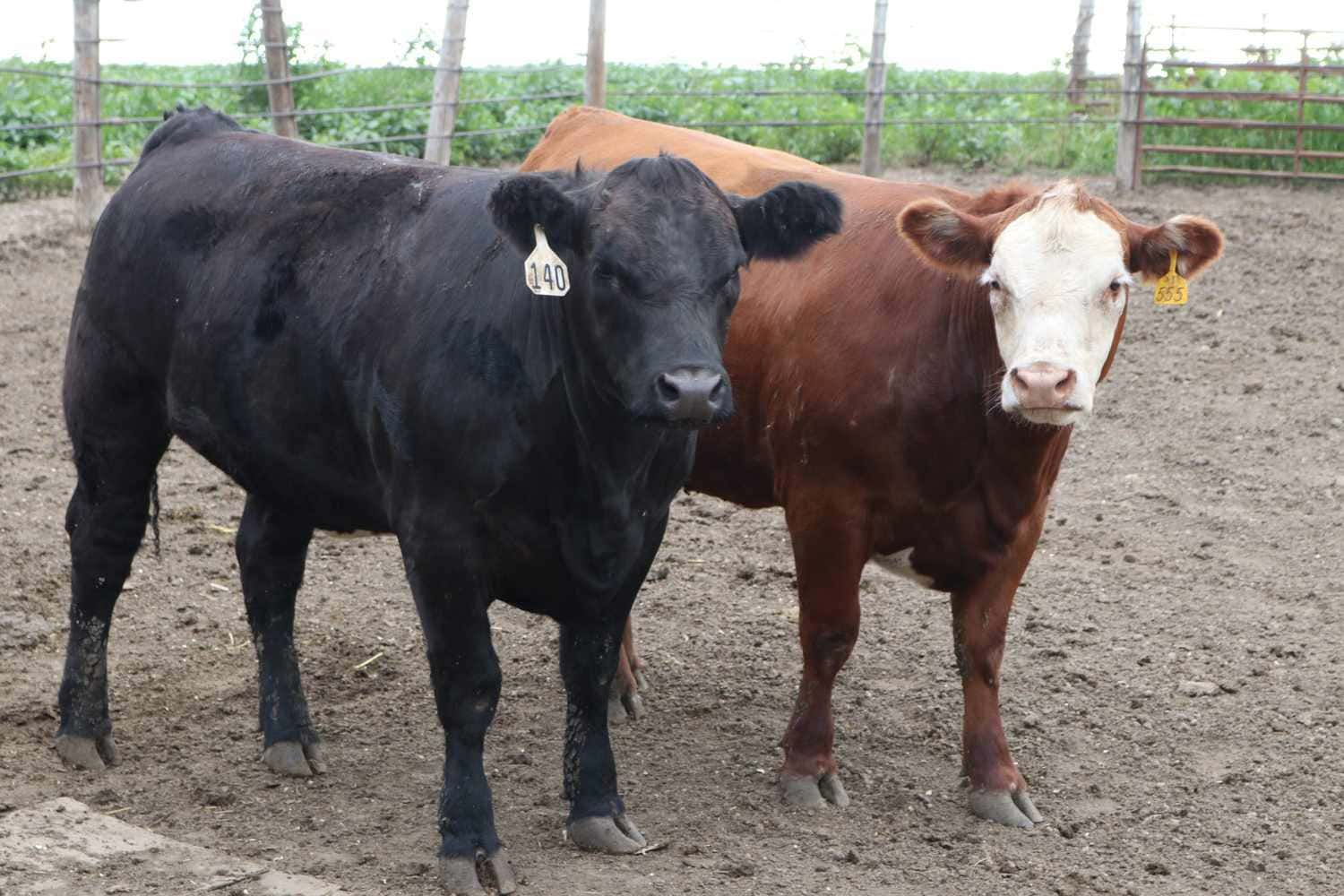Ever wondered why some cows are black and white spotted while others are solid brown? Or why certain farms seem to have completely different-looking cattle than others?
The world of cattle breeds is far more diverse and fascinating than most people realize. With over 250 recognized breeds worldwide and more than 80 readily available in the United States alone, each breed has been carefully developed over centuries to excel in specific environments and purposes.
Whether you’re a curious livestock enthusiast, considering raising cattle, or simply want to understand the animals behind your daily dairy products, this comprehensive guide will transform how you view these remarkable creatures.
By the end of this article, you’ll be able to identify major cattle breeds, understand their unique characteristics, and appreciate the incredible diversity that makes modern agriculture possible.
👉Discover 10 Miniature Cattle Breeds for Small Farms
The Foundation: Understanding Cattle Classifications
Before diving into specific breeds, it’s essential to understand the fundamental classifications that organize the cattle world. All domestic cattle fall into two primary scientific categories that influence everything from their appearance to their performance.
Bos Taurus vs. Bos Indicus: The Great Divide:
The cattle world splits into two main branches. Bos taurus, or non-humped cattle, originated in Europe and the British Isles. These are the breeds most familiar to those in temperate climates—think Holstein dairy cows and Angus beef cattle. They typically have shorter hair, are less heat-tolerant, and mature earlier than their cousins.
Bos indicus, commonly known as Zebu cattle, developed in South Asia and are easily identified by the distinctive hump on their shoulders.
These breeds, including Brahman cattle, excel in hot, humid climates and show remarkable resistance to parasites and diseases. They’re the marathon runners of the cattle world—built for endurance and survival in challenging conditions.
The reproductive differences between these types are particularly important for producers to understand. Bos indicus cattle typically reach puberty 3-6 months later than Bos taurus breeds, with heifers often not breeding until 18-24 months of age compared to 12-15 months for European breeds.
However, Bos indicus cows often remain productive longer, with many producing calves well into their teens.
Many modern breeds represent crosses between these two types, combining the production advantages of Bos taurus with the environmental adaptability of Bos indicus. These crosses have created some of the most successful commercial breeds in regions with challenging climates.
Purpose-Driven Breeding: Dairy, Beef, and Dual-Purpose Cattle
Understanding a breed’s primary purpose provides crucial insight into its characteristics and optimal uses. Cattle breeds generally fall into three functional categories, each developed through generations of selective breeding for specific traits.
Dairy Powerhouses: Built for Milk Production
Dairy breeds represent the pinnacle of milk production efficiency, but this specialization comes with specific management requirements and economic considerations. These breeds convert feed to milk at remarkable rates, but they require high-quality nutrition and intensive management to reach their genetic potential.
Holstein: The Milk Factory
The Holstein breed stands as the undisputed champion of milk production, making up about 90% of dairy cattle in the United States. These distinctive black-and-white (or sometimes red-and-white) giants originated in the Netherlands and can produce an average of 2,900 gallons of milk annually—that’s nearly 9 gallons per day during peak lactation.
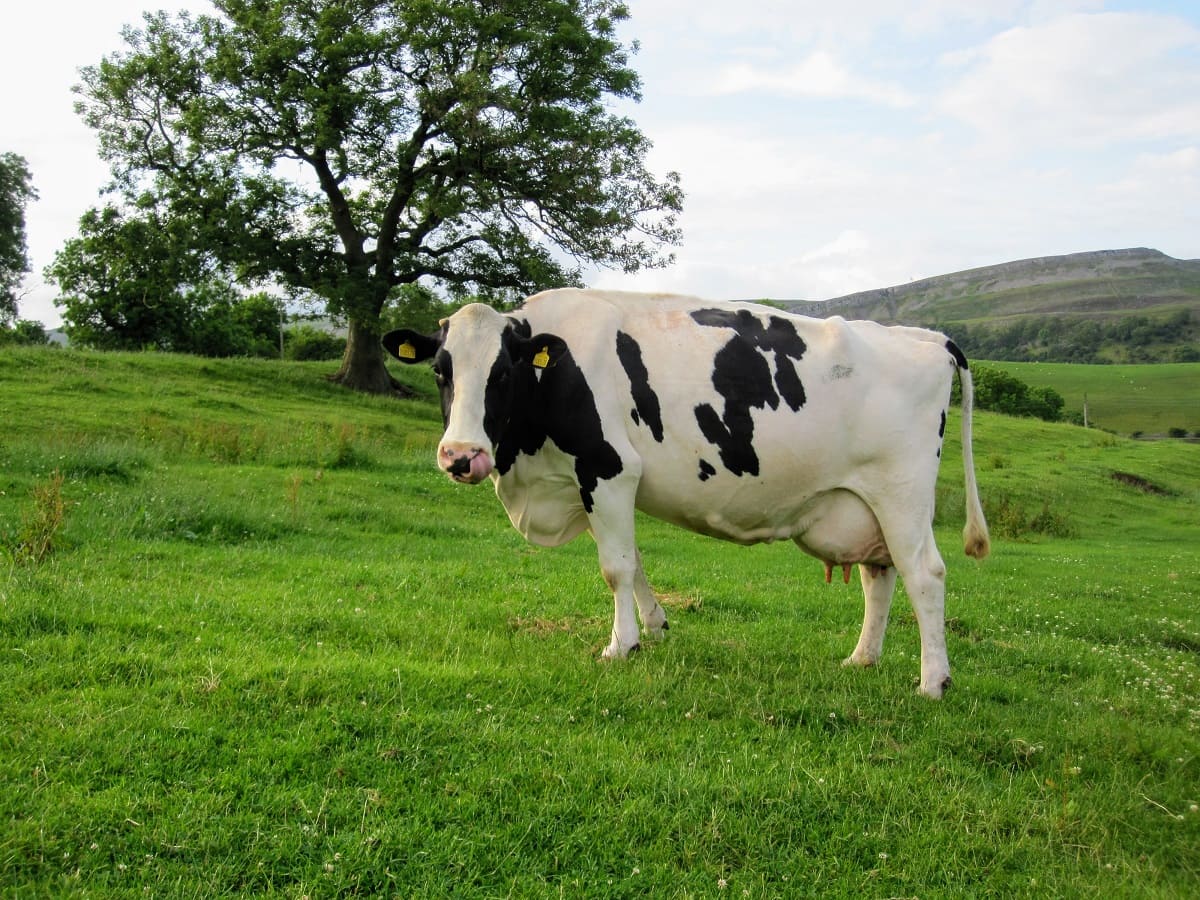
What makes Holsteins remarkable isn’t just quantity but consistency. A mature Holstein cow weighs around 1,500 pounds and stands about 5 feet tall at the shoulder. Their large frame supports the massive udders necessary for their impressive production levels.
However, this production comes at a cost—Holsteins require 90-110 pounds of fresh forage daily plus concentrates, and they need nearly 50 gallons of water per day during peak lactation.
Reproductively, Holsteins typically calve at 24-25 months of age and have relatively short productive lifespans of about 6 years due to the metabolic stress of high production. They generally have good fertility when well-managed but can experience breeding difficulties if body condition drops too low during heavy lactation.
Jersey: Small Package, Premium Product
At the other end of the size spectrum, Jersey cattle prove that bigger isn’t always better. Weighing only 800-1,200 pounds, these fawn-colored beauties from the British Channel Islands may produce less milk than Holsteins, but their milk is liquid gold.
Jersey milk contains 18% more protein and 25% more fat than Holstein milk, making it premium for cheese and butter production.

Jersey cows are living proof that efficiency matters more than size. They require only 65-85 pounds of fresh forage daily—about 30% less than Holsteins—while producing milk with exceptional butterfat content often exceeding 5%.
Their superior feed conversion efficiency means they can produce more milk solids per pound of feed consumed than larger breeds.
Jerseys also excel reproductively, often calving at 22-24 months of age with fewer calving difficulties due to their smaller calf size. They typically live longer than Holsteins, with many remaining productive for 25 years or more, and they show excellent heat tolerance and fertility in challenging climates.
Brown Swiss: The Gentle Giants
Often called the oldest of the pure dairy breeds, Brown Swiss cattle bring a unique combination of size, production, and temperament. These solid brown cattle from Switzerland produce milk that’s particularly prized by cheesemakers due to its ideal protein-to-fat ratio and superior coagulation properties.
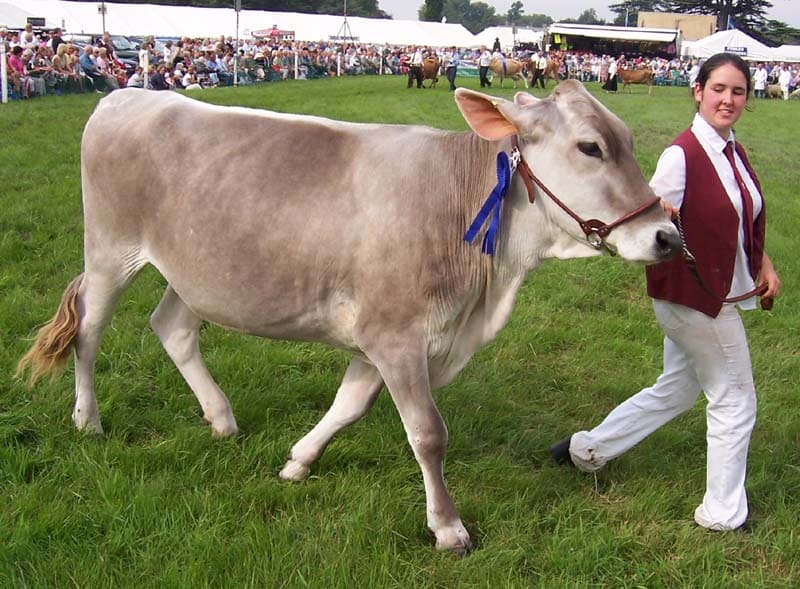
Brown Swiss cows typically produce 5,000-12,000 pounds of milk per lactation with 4.2% fat and 3.7% protein content. They’re known for their longevity and calm disposition, often remaining productive well into their teens.
Their larger size means higher maintenance requirements, but their exceptional reproductive performance and longevity often make them economically attractive despite higher feed costs.
Ayrshire: The Scottish Aristocrat
Known as the “aristocrat” of dairy breeds, Ayrshire cattle from Scotland bring a unique combination of hardiness and production capability. These medium-sized cows, typically weighing 1,200 pounds at maturity, are easily recognized by their red and white markings that can range from light red to deep mahogany.
Ayrshires produce high-quality milk with excellent protein content, making it ideal for cheese production. They typically yield 3,000-4,000 pounds of milk per lactation with 4.2% fat and 3.3% protein.
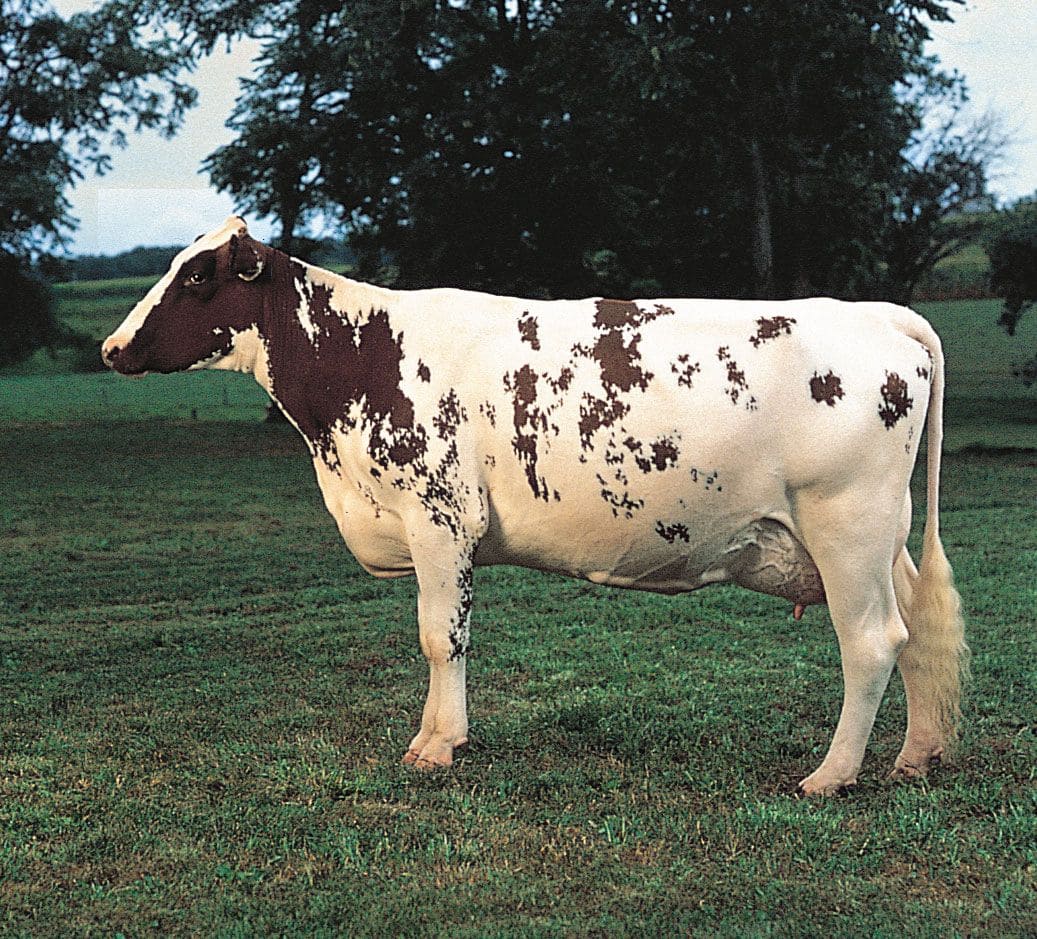
What sets Ayrshires apart is their exceptional adaptability—they perform well in both pasture-based and confinement systems and show remarkable tolerance to various climatic conditions.
Their reproductive performance is outstanding, with easy calving, high fertility rates, and excellent maternal instincts. Ayrshires are known for their longevity and disease resistance, often remaining productive for 12-15 years. Their active nature and excellent foraging ability make them particularly well-suited for grazing systems.
Guernsey: The Golden Breed
Guernsey cattle from the Isle of Guernsey produce milk with a distinctive golden color that has earned them the nickname “Golden Guernsey.” This unique coloration comes from exceptionally high beta-carotene content, making their milk a natural source of vitamin A.
These fawn and white cattle typically weigh 1,100-1,200 pounds and produce about 4,500-6,000 pounds of milk per lactation with impressive 4.3% fat and 3.7% protein content. Guernseys are particularly valued for their efficiency—they can produce high-quality milk while consuming 20-30% less feed than larger dairy breeds.
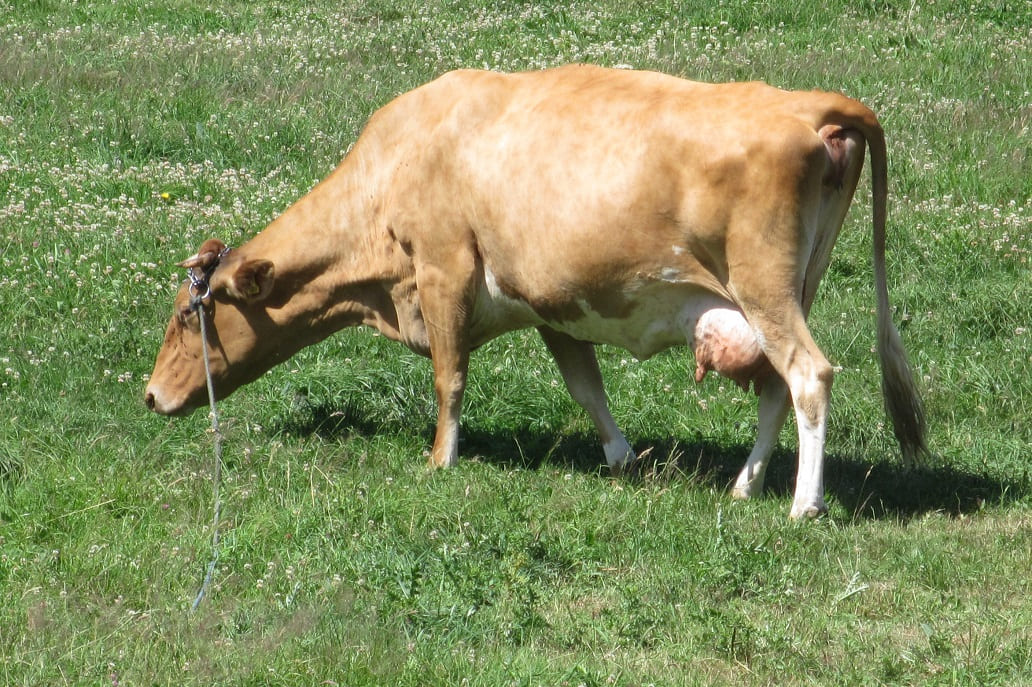
Their gentle temperament and superior heat tolerance make them excellent choices for warmer climates. Guernseys are known for calving ease, with minimal birthing difficulties, and their strong maternal instincts ensure high calf survival rates.
Their longevity often exceeds that of more intensive dairy breeds, with many remaining productive for 15 years or more.
Red and White Holstein
The Red and White Holstein represents an interesting variation within the Holstein breed. These cattle carry the recessive red gene, resulting in red and white markings instead of the traditional black and white pattern. Genetically, they’re identical to black Holsteins in production capability and other traits.
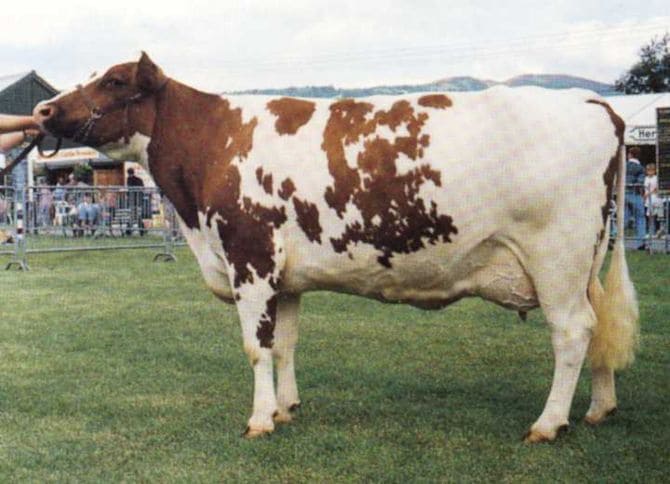
Red and White cattle typically produce similar quantities of milk to their black counterparts—around 2,900 gallons annually with 3.8% fat and 3.2% protein.
Their red coloration provides some advantages in sunny climates, as they show better heat tolerance than black cattle. This breed demonstrates how genetic variation within breeds can provide practical advantages for specific environments.
Beef Breeds: Engineered for Meat Production
Beef cattle breeds focus on converting feed into high-quality meat efficiently. These breeds vary dramatically in size, growth rate, and meat characteristics, allowing producers to match genetics with specific market demands and environmental conditions.
Angus: The Marbling Master
Aberdeen Angus cattle, whether black or red, have earned their reputation as the gold standard for beef quality. Originating in Scotland, these naturally polled (hornless) cattle excel at producing well-marbled meat that commands premium prices. Over 98% of Angus calves are born unassisted, making them exceptionally valuable for ease of management.
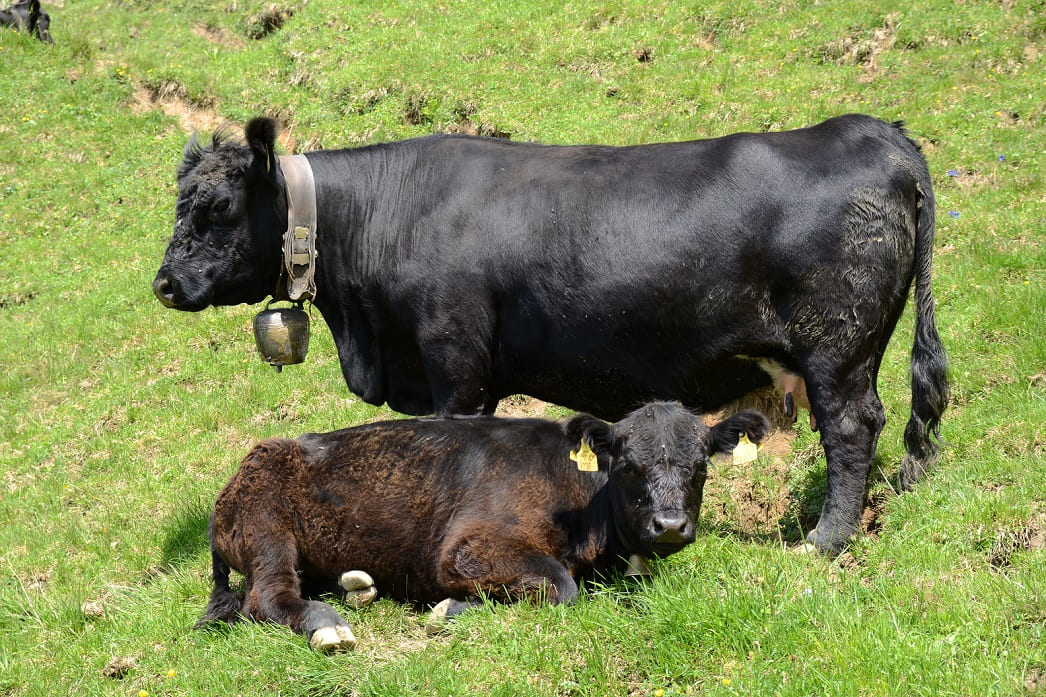
What sets Angus apart is their ability to lay down intramuscular fat (marbling) at relatively light weights, creating tender, flavorful beef. They typically reach puberty at 12-14 months, earlier than most beef breeds, and their moderate mature size (1,000-1,800 pounds) means lower maintenance costs compared to larger continental breeds.
Angus cows are also excellent mothers with strong maternal instincts. They typically wean calves at 50-65% of their own body weight, indicating superior milk production for a beef breed. Their feed conversion efficiency is excellent, requiring about 6-7 pounds of feed per pound of gain under good conditions.
Hereford: The Adaptable All-Rounder
With their distinctive red bodies and white faces, Herefords have earned recognition as one of the most adaptable beef breeds. Developed in England in the 1700s, these medium-sized cattle thrive in diverse environments and are known for their docile temperament and efficient feed conversion.
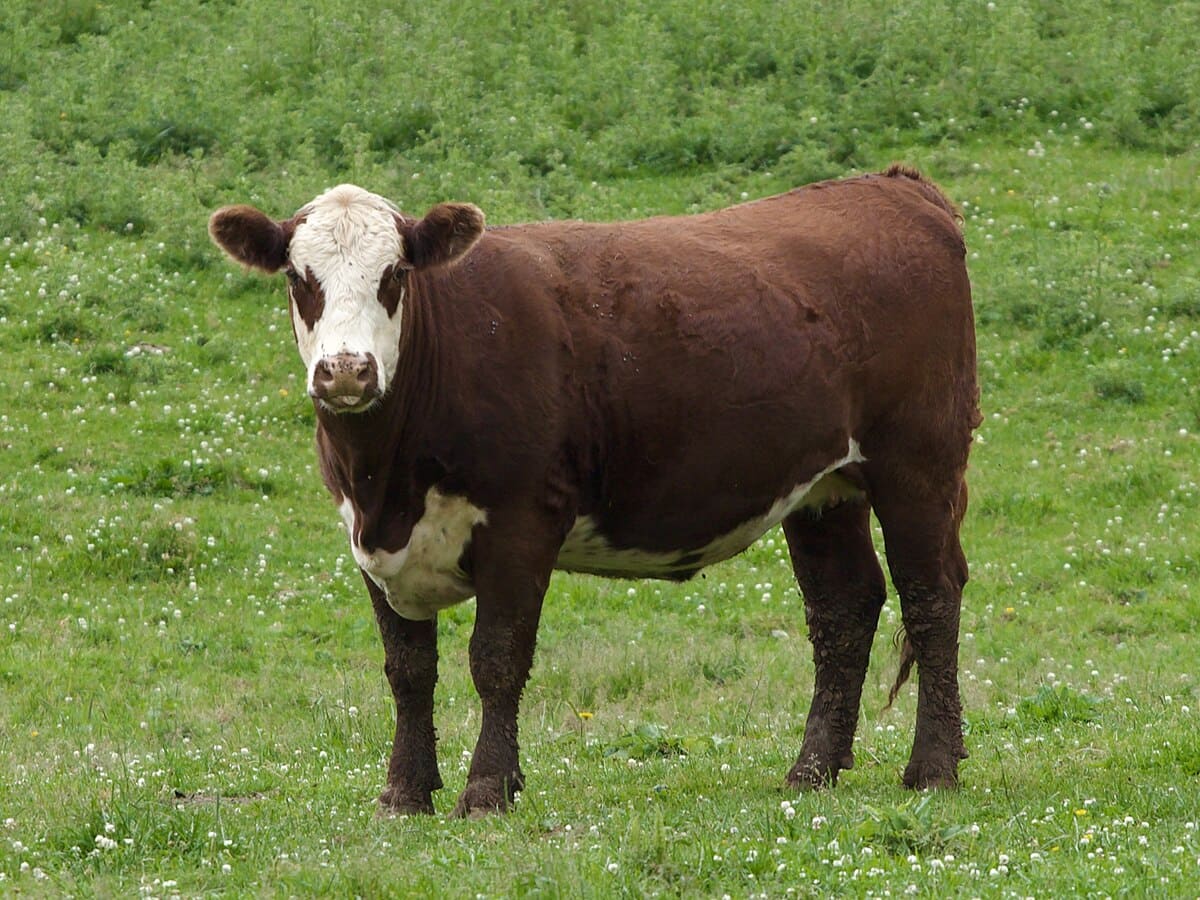
Herefords excel in extensive grazing systems and harsh environments where their foraging ability and hardiness provide distinct advantages. They typically reach puberty at 12-15 months and have exceptional longevity, with many cows remaining productive for 15-20 years.
Their early maturity means they can be finished for market at lighter weights, making them economical for operations with limited feed resources.
The breed’s superior maternal ability shows in their high conception rates (often exceeding 95% in well-managed herds) and their ability to wean calves averaging 85-90% of their own body weight. Their calm disposition reduces handling costs and stress-related production losses.
Charolais: The Growth Machine
Charolais cattle represent the extreme end of the growth spectrum. These massive white-to-cream colored cattle from France can reach weights exceeding 2,500 pounds for bulls and 1,600 pounds for cows. Their rapid growth rate and muscular build make them popular for crossbreeding programs aimed at increasing size and growth rate in commercial herds.
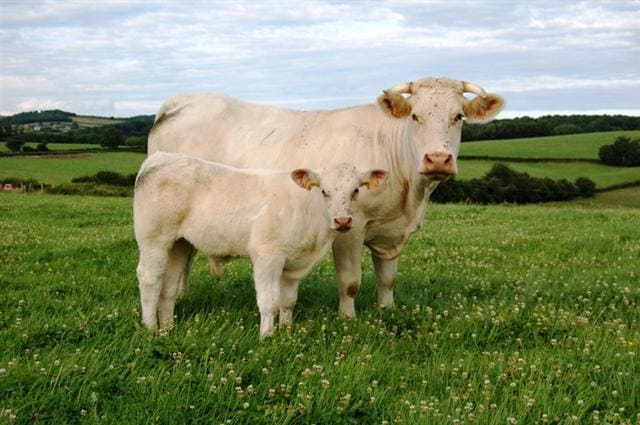
Charolais bulls typically gain 3-4 pounds daily under good conditions, with exceptional feed conversion ratios of 5-6 pounds of feed per pound of gain. However, their size comes with trade-offs.
Charolais heifers typically don’t breed until 15-18 months of age, and their large calf size can cause calving difficulties, particularly in first-calf heifers. They require high-quality nutrition year-round and are best suited for situations where maximum growth and muscle are priorities.
👉 Should You Keep a Bull? Insights from a Rancher’s Perspective
Limousin: The Carcass Champion
Limousin cattle from France have earned the title “carcass breed” for their exceptional meat-to-bone ratio and lean muscle development. These golden-wheat colored cattle are renowned for producing the highest red meat yield of any major breed, making them favorites in feedlot operations focused on efficiency.
Bulls typically weigh 2,200-2,400 pounds while cows reach 1,400-1,600 pounds. What makes Limousins remarkable is their ability to produce heavily muscled carcasses with minimal external fat cover. They excel in feed conversion, often requiring 10-15% less feed per pound of gain than other Continental breeds.
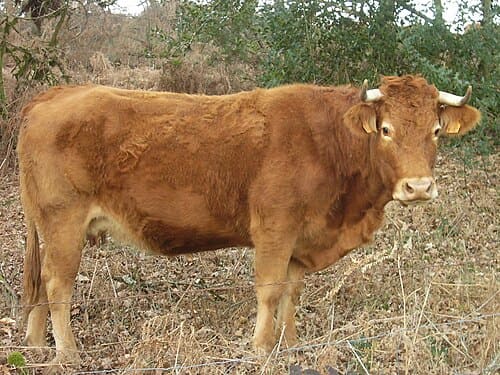
Limousin cows demonstrate excellent maternal traits with easy calving due to their calves’ fine-boned structure at birth. The calves develop their characteristic heavy muscling as they mature, avoiding the birthing difficulties sometimes associated with muscular breeds. Their longevity and fertility make them valuable in commercial breeding programs.
Gelbvieh: The German Efficiency Expert
Developed in Bavaria through government-controlled breeding programs, Gelbvieh cattle represent German precision in livestock development. These reddish-gold cattle were originally dual-purpose animals but have been refined for beef production while maintaining excellent maternal traits.
Gelbvieh bulls typically weigh 2,300-2,800 pounds and cows 1,400-1,800 pounds. They’re known for rapid growth rates and excellent feed efficiency, often gaining 3+ pounds daily under good conditions. Their moderate frame size allows them to finish at lighter weights than some Continental breeds while maintaining excellent muscling.
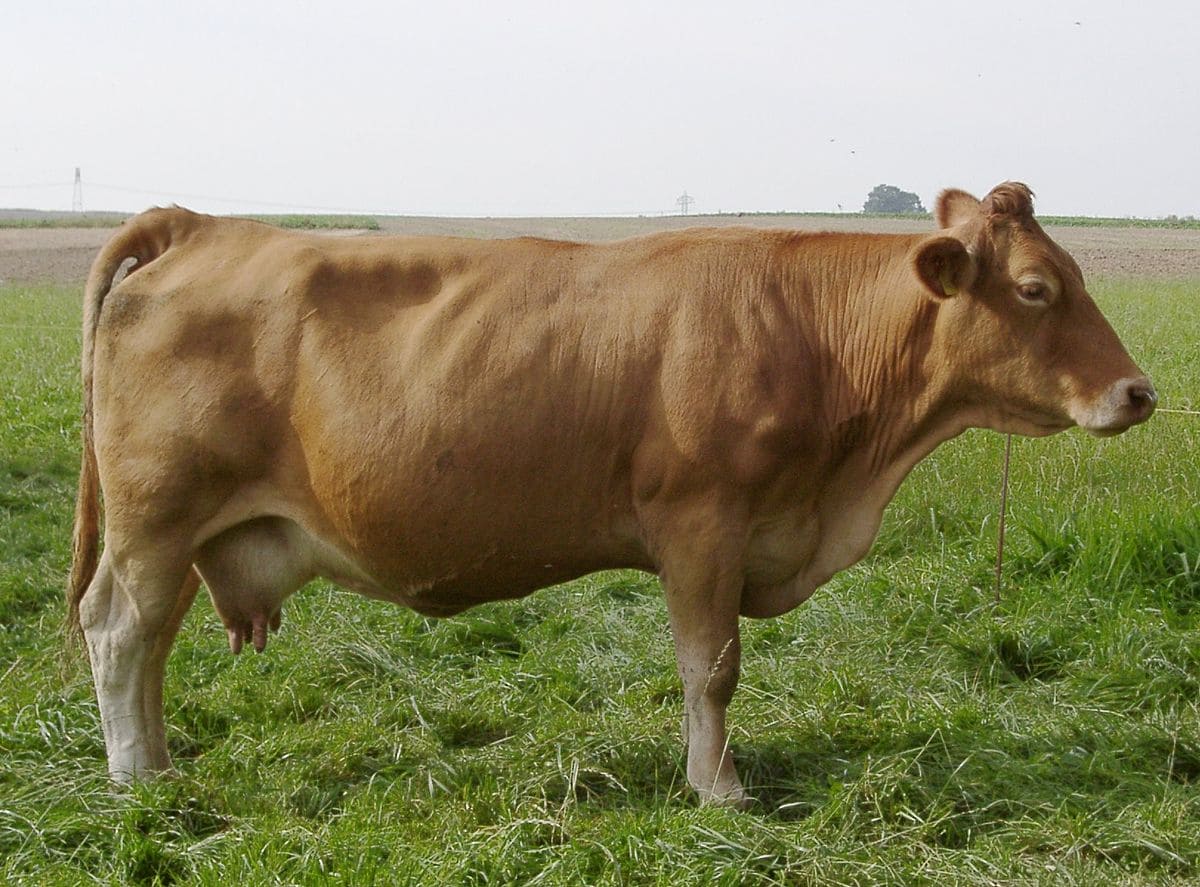
The breed’s reproductive performance is outstanding, with heifers typically reaching puberty at 13-15 months and maintaining high conception rates throughout their productive lives. Gelbvieh cows are noted for their high milk production, often weaning calves at 60-65% of their own body weight.
Maine-Anjou: The French Giant
Maine-Anjou cattle from France represent one of the largest beef breeds, with bulls often exceeding 2,800 pounds and cows reaching 1,800-2,000 pounds. These dark red cattle with white markings were originally developed by crossing local French cattle with imported Shorthorns.
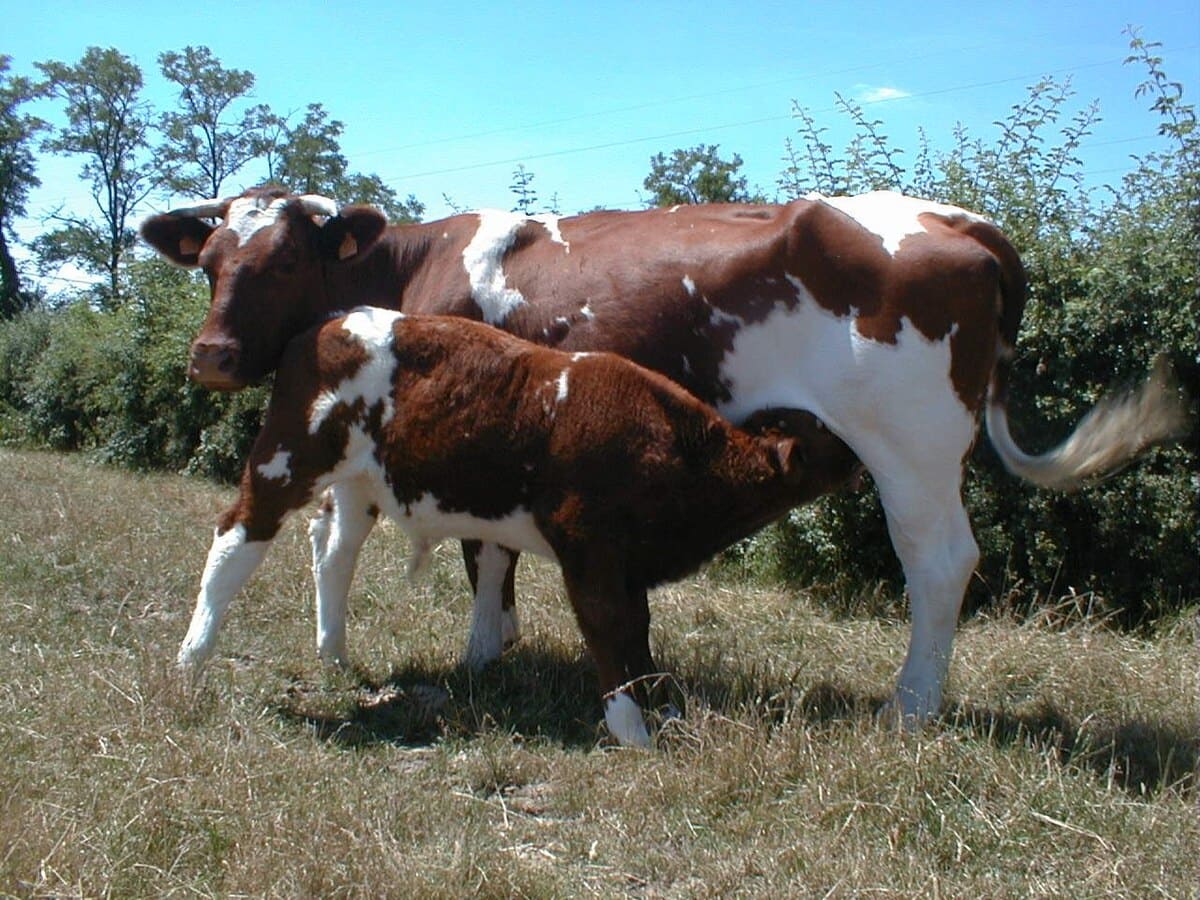
Their massive size translates to impressive growth rates, with calves often gaining 4+ pounds daily under good nutrition. Maine-Anjou cattle produce exceptionally lean carcasses with large ribeye areas, making them valuable for producing high-yield beef. However, their size requires careful management, particularly regarding calving ease in first-calf heifers.
👉 Read the Guide to Livestock Umbilical Care for a Healthy Start to Life
Despite their size, Maine-Anjou cattle are known for docile temperaments and good maternal instincts. Their cows typically produce ample milk to support rapid calf growth, and their longevity often exceeds that of other large Continental breeds.
Salers: The French Mountain Breed
Salers cattle from the volcanic regions of central France represent one of the most maternal Continental breeds. These solid red (occasionally black) cattle developed in harsh mountain conditions, resulting in exceptional hardiness and reproductive efficiency.
Bulls typically weigh 2,000-2,500 pounds while cows range from 1,300-1,500 pounds. Salers are known for easy calving, with cows possessing the largest pelvic area measurements of any breed. This characteristic, combined with their strong maternal instincts, results in high weaning percentages even under challenging conditions.
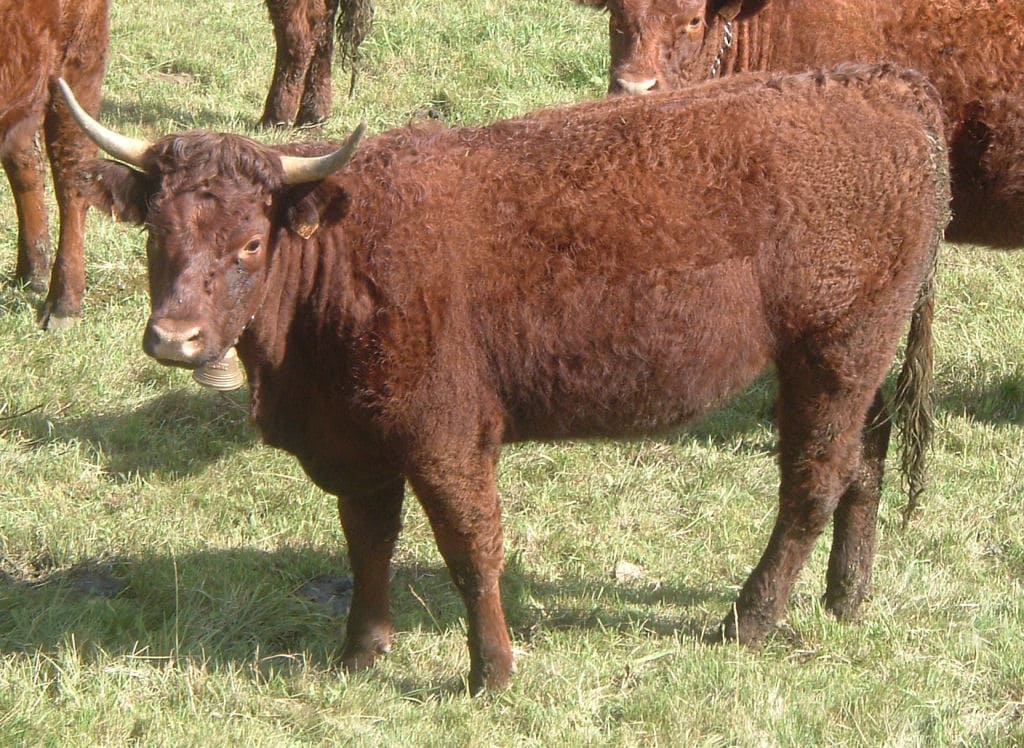
Their milk production rivals that of many dairy breeds, often weaning calves at 55-60% of their own body weight. Salers cattle show excellent longevity and adaptability to harsh climates, making them valuable for extensive grazing operations. Their marbling ability is superior to most Continental breeds, producing beef that grades well.
Belgian Blue: The Double-Muscled Wonder
Belgian Blue cattle represent an extreme example of muscle development through selective breeding. These cattle possess a genetic mutation that prevents the normal limitation of muscle growth, resulting in “double-muscling” and exceptional meat yields.
Bulls typically weigh 2,500-2,800 pounds while cows reach 1,400-1,700 pounds, but their muscle-to-bone ratio far exceeds that of conventional breeds. Belgian Blues can yield carcasses with 20% more muscle and 7% less fat than typical beef breeds. Their meat is exceptionally lean and tender.
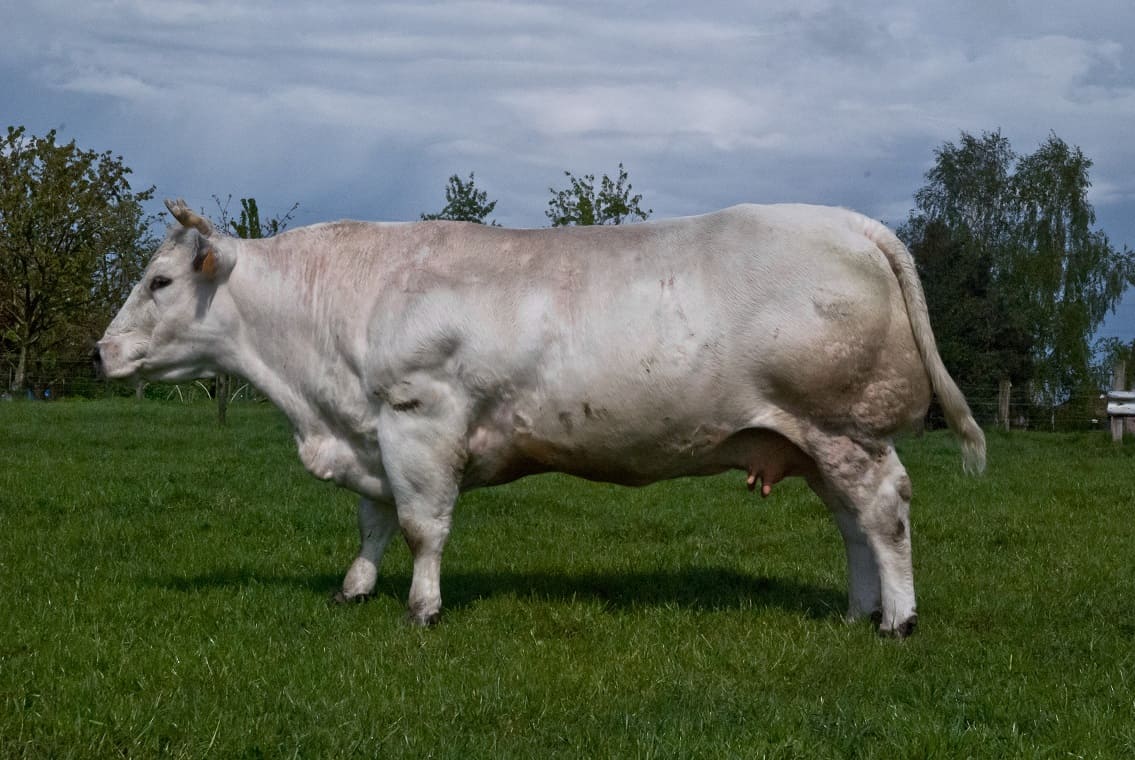
However, their extreme muscling comes with management challenges. Most Belgian Blue calves must be delivered by cesarean section due to their size and the calves’ large shoulders.
Despite these challenges, they’re valuable in terminal crossing systems where their superior yielding ability can be captured while avoiding the calving difficulties in crossbred offspring.
Piedmontese: The Italian Muscle Machine
Piedmontese cattle from northwestern Italy also carry the double-muscling gene but in a more moderate form than Belgian Blues. These white cattle with black skin pigmentation produce exceptionally lean, tender beef while maintaining easier calving than other double-muscled breeds.
Bulls weigh 1,700-2,000 pounds while cows typically reach 1,200-1,400 pounds. Piedmontese cattle produce carcasses with 14% more muscle mass than conventional breeds while maintaining good marbling and tenderness. Their meat is naturally tender due to the genetic characteristics that produce their enhanced muscling.
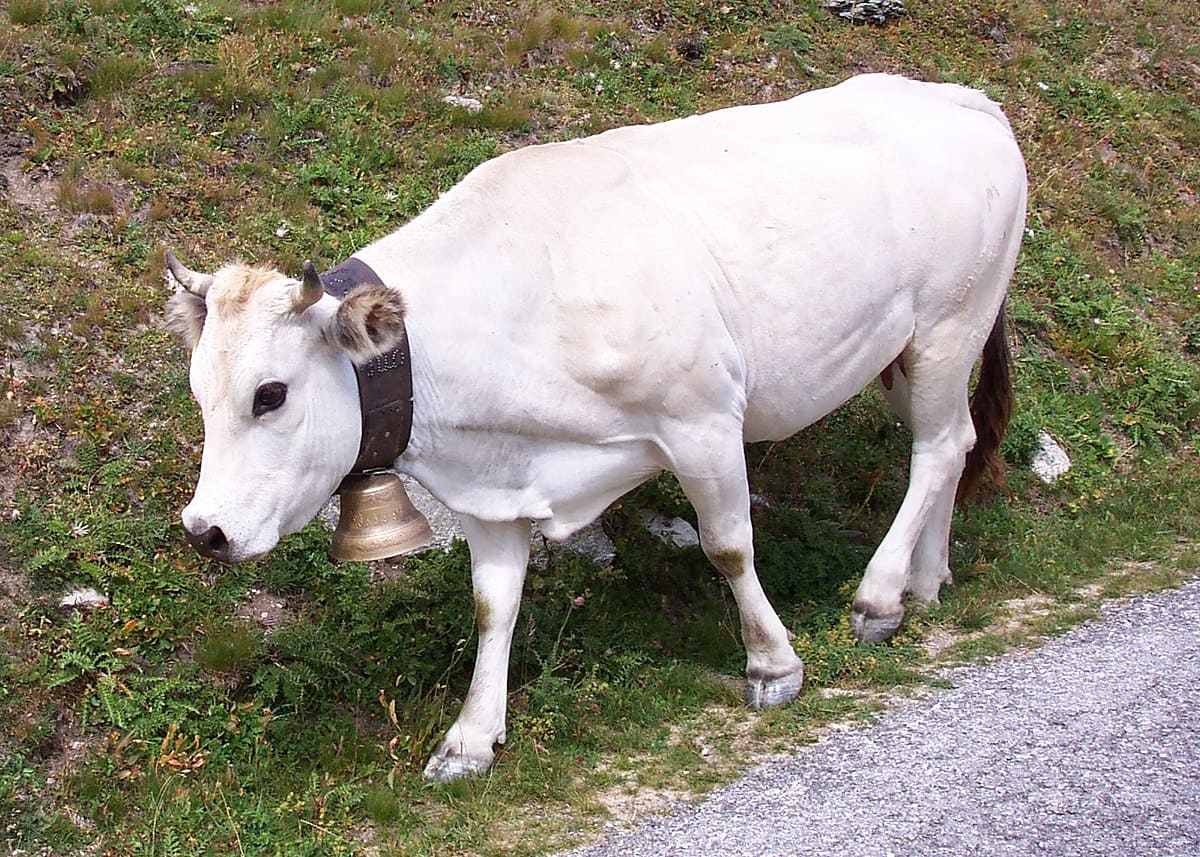
Unlike some double-muscled breeds, Piedmontese cattle maintain good fertility and maternal ability. Their calves are born at moderate weights despite their genetic potential for extreme muscle development, which occurs as they mature.
👉 Learn about Miniature Cattle: The New Trend in Livestock Ownership?
Dual-Purpose Breeds: The Best of Both Worlds
Dual-purpose breeds represent a practical approach to cattle breeding, combining respectable milk production with good beef characteristics. These breeds offer economic advantages in systems where both milk and meat production are important.
Simmental: The Swiss Army Knife
Simmental cattle exemplify the dual-purpose concept. These large, red-and-white cattle from Switzerland rank among the world’s most popular breeds due to their versatility. Simmental cows can produce 7,000-11,000 pounds of milk per lactation while raising calves that grow rapidly and yield high-quality carcasses.
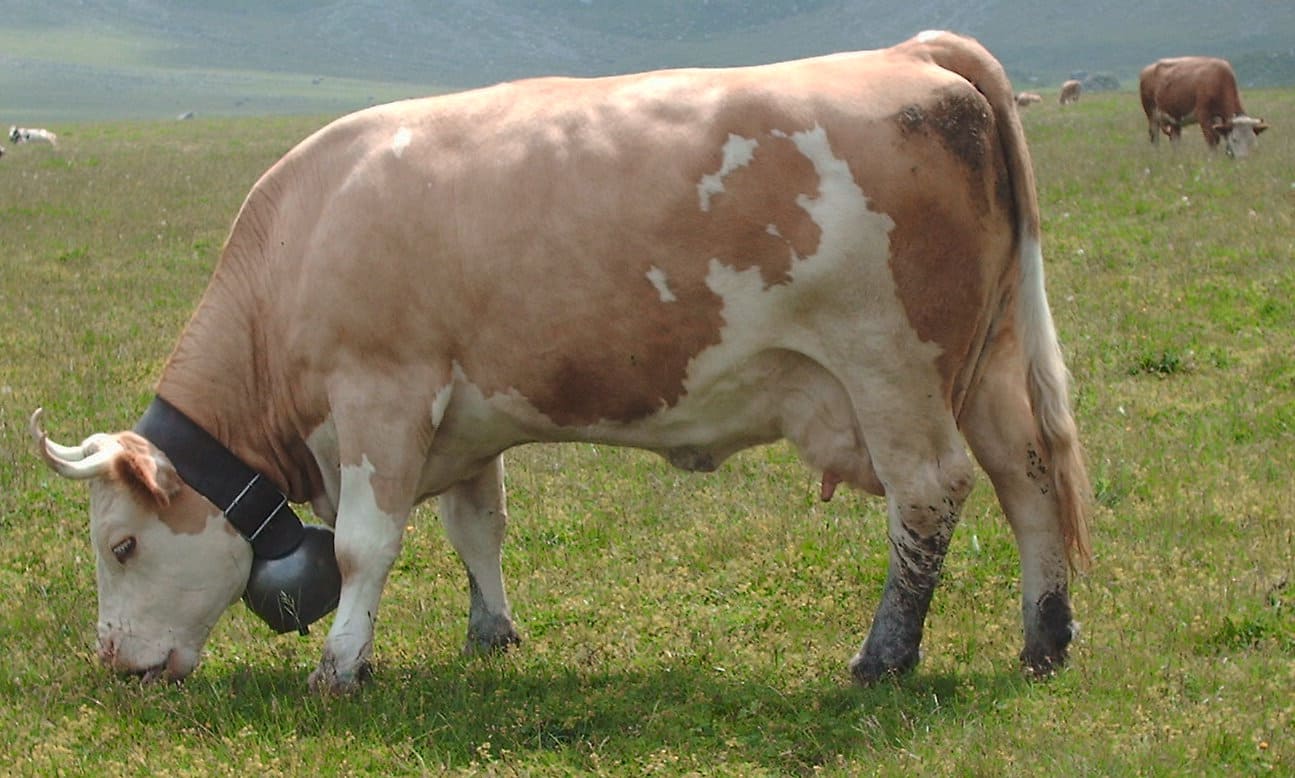
Their reproductive performance is outstanding, with heifers typically reaching puberty at 13-15 months and maintaining high conception rates throughout their productive lives. Simmental cows are noted for their longevity and excellent maternal ability, often producing 12-15 calves during their lifetimes.
Their ability to thrive in diverse climates and production systems has made Simmentals popular worldwide. They’re particularly valuable in crossbreeding programs where producers want to improve both maternal ability and growth rate in their cattle.
Shorthorn: The Foundation Breed
Shorthorn cattle hold the distinction of being called the “Foundation breed” because they’ve contributed genetics to over 30 other breeds worldwide. These versatile cattle can be red, white, or roan colored and have played crucial roles in developing the beef industries in multiple countries.
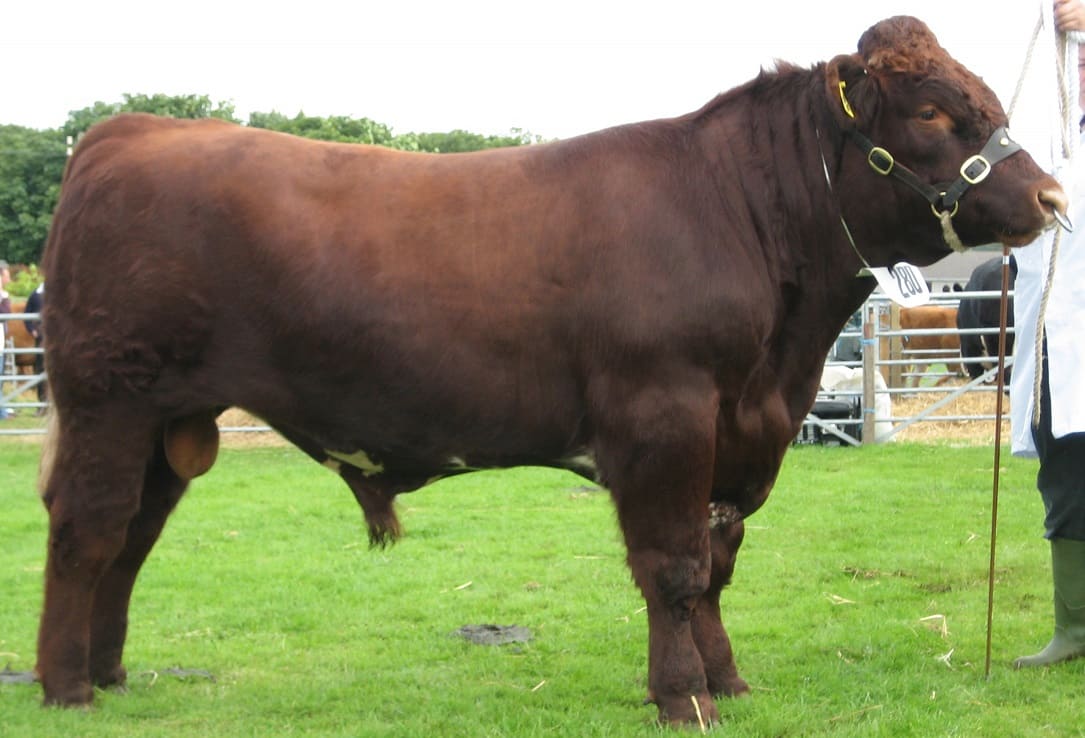
Modern Shorthorns excel in both milk and beef production, though specialized lines have been developed for each purpose. Milking Shorthorn cows typically produce 3,000-4,000 pounds of milk per lactation with 3.8% fat and 3.5% protein.
Their moderate size (1,200-1,400 pounds for cows) makes them efficient converters of moderate-quality feeds, and their adaptability makes them suitable for a wide range of production systems.
Pinzgauer: The Austrian Alpine
Pinzgauer cattle from the Austrian Alps represent another excellent dual-purpose breed. These distinctive cattle are easily identified by their chestnut-brown color and characteristic white stripe running along their backs and extending to their rumps and tails.
Bulls typically weigh 2,000-2,400 pounds while cows range from 1,300-1,600 pounds. In their native Austria, Pinzgauers are prized for both milk and beef production. They typically produce 6,000-7,000 pounds of milk per lactation with good fat and protein content. Their beef production is equally impressive, with excellent growth rates and well-marbled meat.
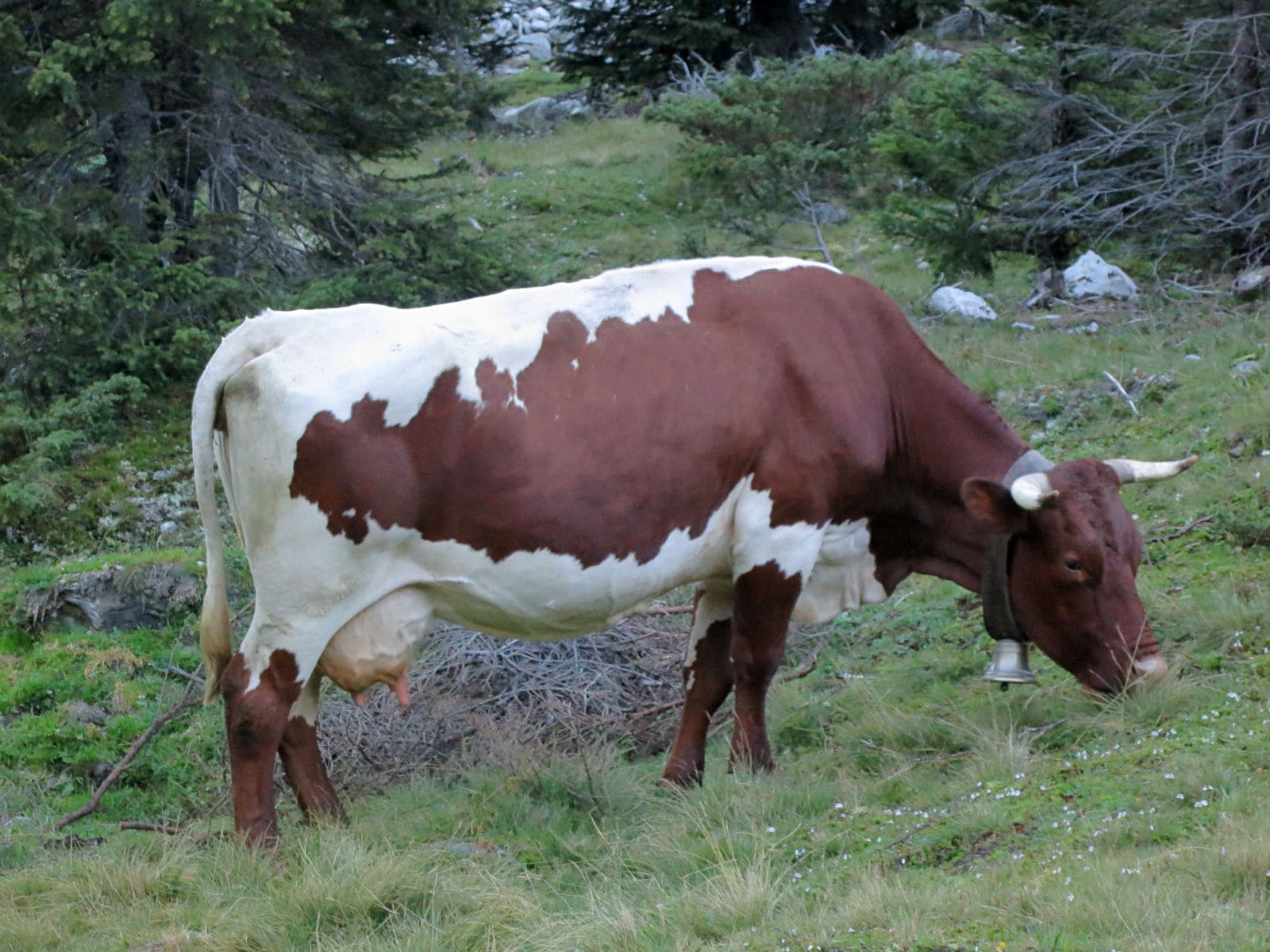
Pinzgauer cattle are known for their longevity, fertility, and gentle temperament. They adapt well to harsh mountain conditions and show excellent maternal ability. Their unique coloration and hardy nature have made them popular for sustainable agriculture operations worldwide.
Devon: The Triple-Purpose Pioneer
Devon cattle from southwestern England were among the first cattle brought to North America and were historically valued as triple-purpose animals—providing milk, meat, and draft power. These solid red cattle played crucial roles in colonial American agriculture.
Modern Devons typically weigh 1,600-1,800 pounds for bulls and 1,100-1,300 pounds for cows. They produce moderate quantities of rich milk (3,000-4,000 pounds per lactation) while maintaining excellent beef characteristics. Devon beef is noted for its fine marbling and exceptional flavor.
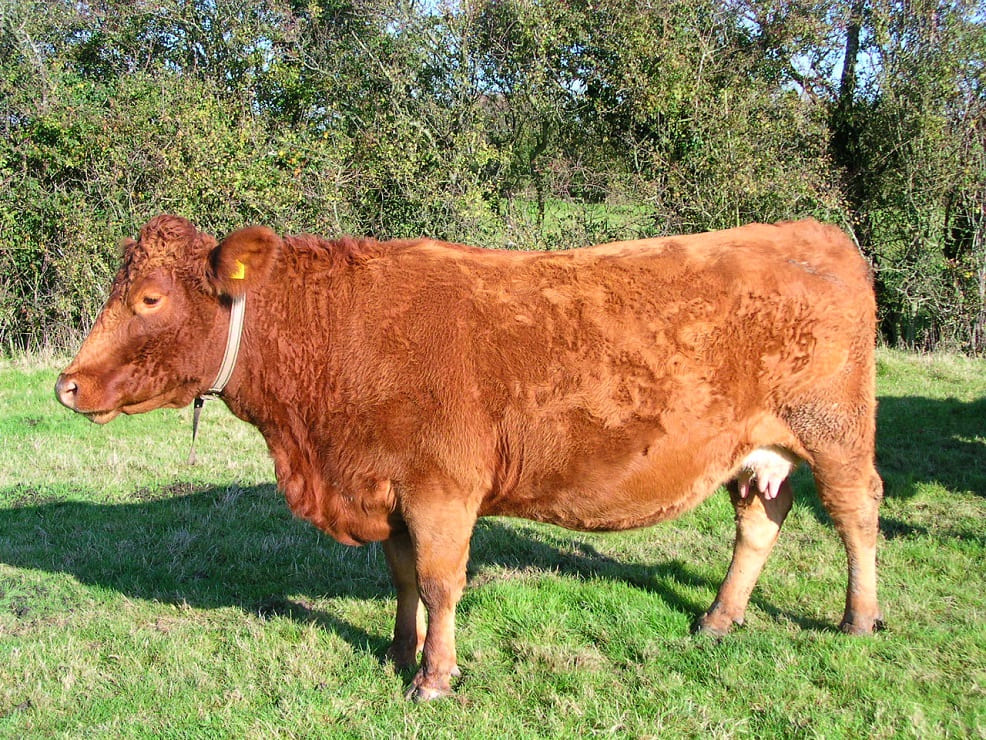
Their hardiness and foraging ability made them ideal for frontier conditions, and these characteristics remain valuable today. Devon cattle show excellent heat tolerance, disease resistance, and the ability to thrive on marginal forage. Their docile temperament and strong maternal instincts add to their appeal for sustainable farming systems.
👉 Learn about Winter Cattle Care: Essential Tips to Keep Your Herd Healthy and Happy
Specialty Breeds: Unique Solutions for Specific Needs
Beyond the mainstream breeds lie numerous specialty breeds developed for specific purposes or environments. These breeds often possess unique characteristics that make them valuable for particular niches, though they may require specialized marketing or management.
Texas Longhorn: The Ultimate Survivor
Texas Longhorns represent one of the purest examples of natural selection in domestic cattle. These cattle spent nearly 400 years as essentially feral animals on the American frontier, with natural selection determining which animals survived to reproduce.
The result is a breed of remarkable hardiness, disease resistance, and foraging ability. Their distinctive horns, which can span up to 8 feet tip-to-tip, aren’t just for show—they help with heat dissipation and predator deterrence.
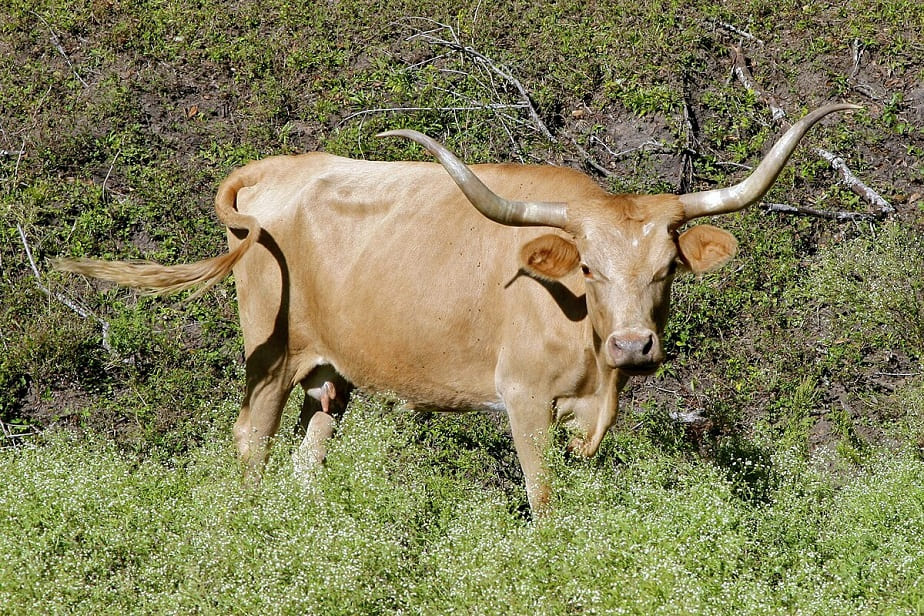
Modern Texas Longhorns produce lean beef (typically 25% less fat than conventional beef) that appeals to health-conscious consumers.
Their reproductive efficiency is outstanding, with conception rates often exceeding 95% and productive lives extending to 20+ years. However, their slower growth rate and smaller mature size mean they’re best suited for niche markets willing to pay premiums for their unique characteristics.
Dexter: The Miniature Marvel
Dexter cattle from Ireland represent the small end of the cattle spectrum. Mature cows weigh only 600-750 pounds, making them ideal for small farms with limited space or resources. Despite their small size, Dexters are dual-purpose animals that produce respectable quantities of rich milk and yield high-quality beef.
A mature Dexter cow can produce 2-3 gallons of milk daily with exceptional butterfat content (4-5%). Their efficiency in converting feed to products, combined with their gentle temperament and easy handling, has made Dexters increasingly popular among hobby farmers and those seeking sustainable livestock options.
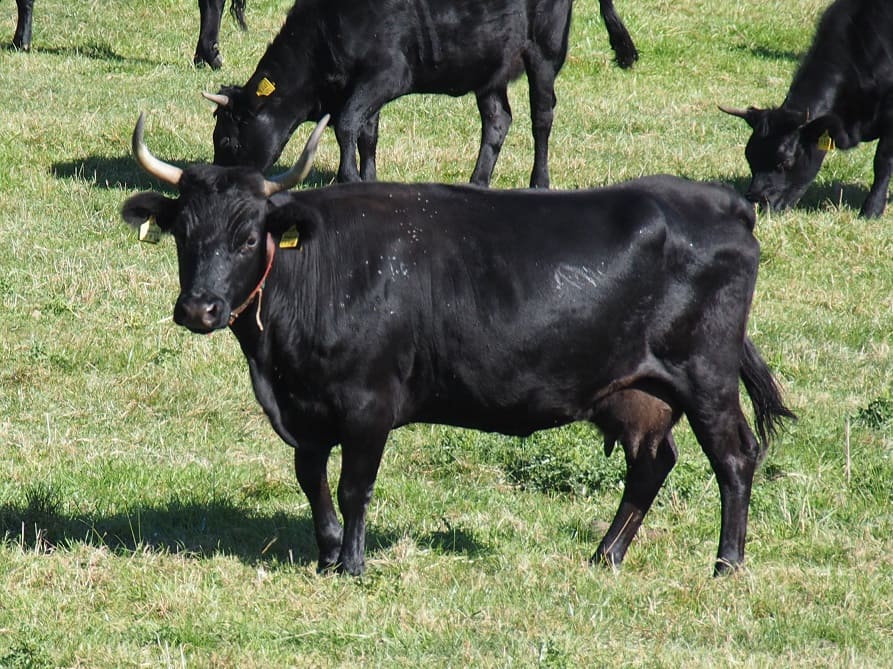
Their reproductive performance is excellent, with few calving problems due to small calf size (typically 40-60 pounds at birth) and high fertility rates. Their longevity often exceeds that of larger breeds, with many remaining productive for 15-20 years.
Wagyu: The Luxury Standard
Wagyu cattle from Japan have achieved legendary status in the culinary world for producing beef with exceptional marbling and flavor. These cattle represent the extreme end of meat quality focus, with some Wagyu beef selling for hundreds of dollars per pound.
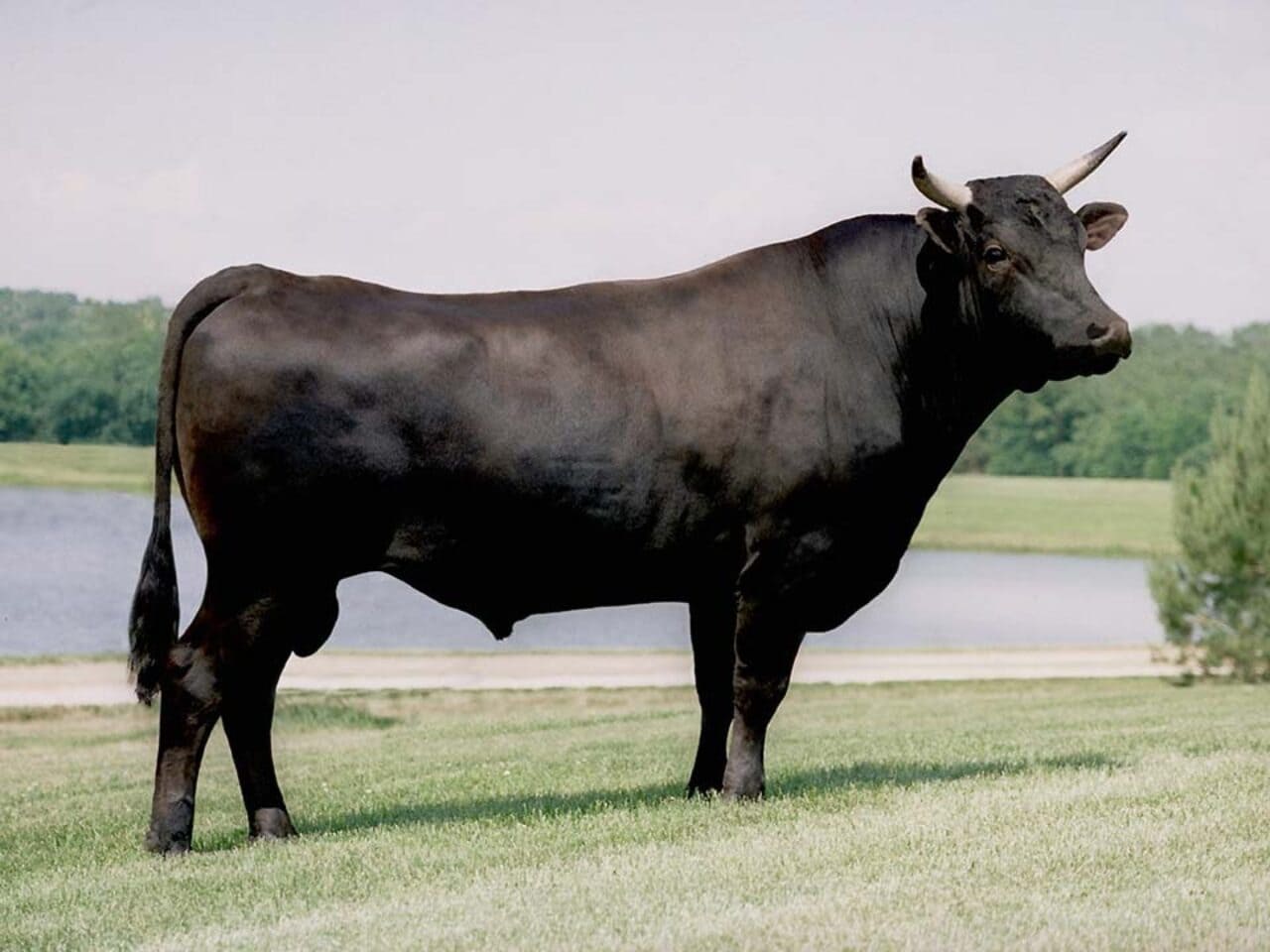
The intensive management required to produce authentic Wagyu beef, including specific feeding regimens that may include beer and massage protocols to reduce stress, demonstrates how far specialization can be taken when market demand justifies the investment.
Wagyu cattle typically grow more slowly than conventional beef breeds but produce meat with marbling scores that far exceed those of other breeds.
👉 Learn about Virtual Reality for Cows: How VR Headsets Could Revolutionize Dairy Farming
White Park: The Ancient Breed
White Park cattle represent one of Britain’s most ancient breeds, with records dating back to the 13th century. These large white cattle with black points (ears, muzzles, and eye rims) were historically kept in royal parks and have maintained their genetic purity for centuries.
Bulls typically weigh 2,000-2,400 pounds while cows range from 1,200-1,600 pounds. White Park cattle produce lean beef with excellent flavor and minimal external fat. Their hardiness and ability to thrive on rough grazing makes them valuable for conservation grazing projects.
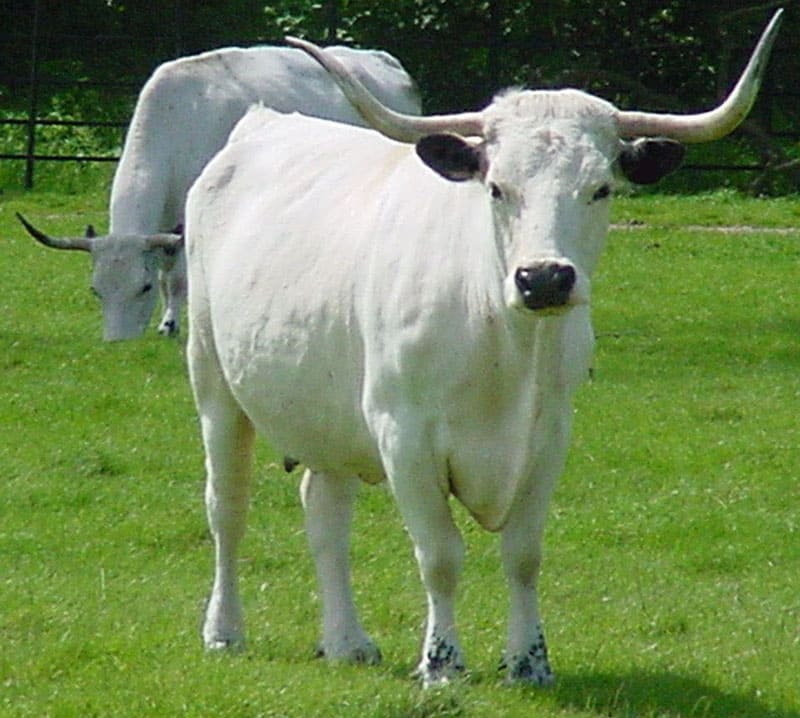
Their reproductive performance is excellent, with easy calving and good maternal instincts. White Park cattle demonstrate remarkable longevity, often remaining productive for 15-20 years. Their historical significance and unique appearance make them popular for heritage farming operations.
Red Poll: The Dual-Purpose Classic
Red Poll cattle from England represent a successful dual-purpose breed developed by crossing Norfolk Red beef cattle with Suffolk Dun dairy cattle. These solid red, naturally polled cattle combine moderate milk production with good beef characteristics.
Cows typically weigh 1,200-1,400 pounds and produce 3,500-4,500 pounds of milk per lactation with good fat and protein content. Their beef production is equally respectable, with good growth rates and well-marbled meat. Red Poll cattle are known for their docile temperament, easy handling, and excellent maternal ability.
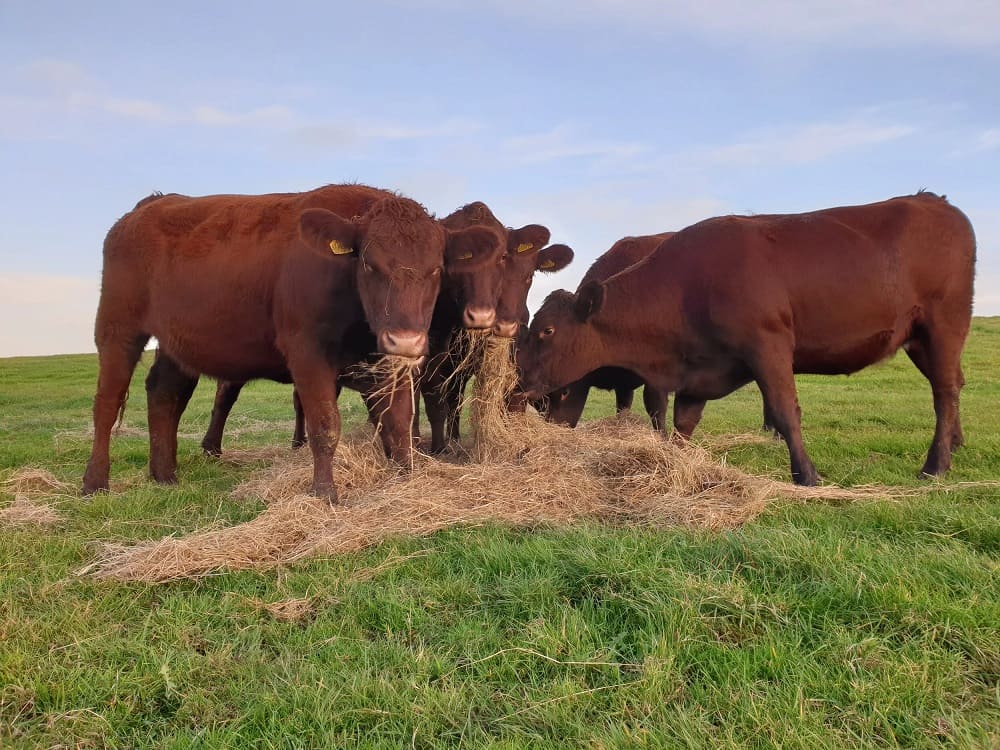
Their efficiency and hardiness made them popular in colonial America, and they remain valuable for sustainable farming systems today. Red Poll cattle demonstrate excellent longevity and disease resistance, often remaining productive without intensive management.
Chianina: The Italian Giant
Chianina cattle from Italy represent one of the world’s largest and oldest breeds, with bulls often exceeding 3,000 pounds. These porcelain-white cattle with black skin are known for their impressive size and lean meat production.
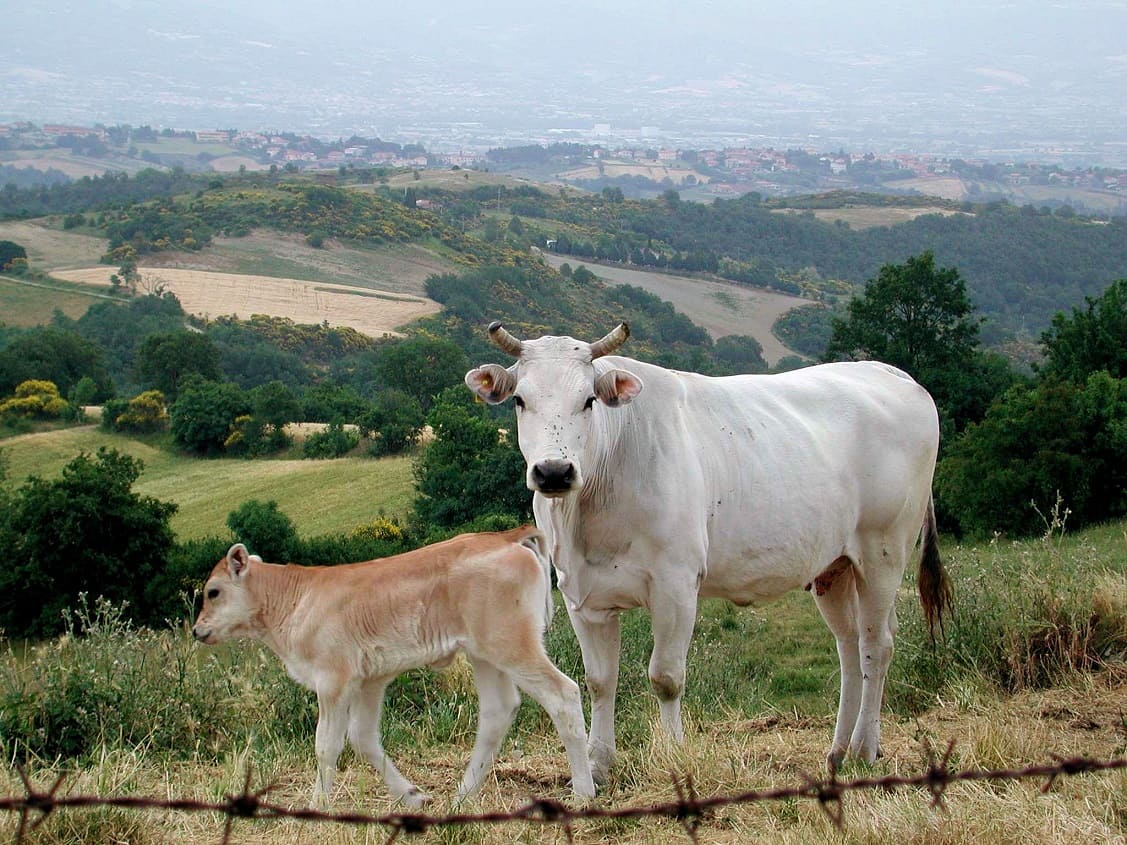
Despite their massive size, Chianina cattle are known for surprisingly easy calving due to their calves’ fine bone structure at birth. They demonstrate excellent growth rates, often gaining 4+ pounds daily under good nutrition. Their meat is exceptionally lean with large ribeye areas and minimal external fat.
Chianina cattle have been used extensively in crossbreeding programs to increase size and muscling in commercial cattle. Their influence can be seen in many modern composite breeds developed for terminal crossing systems.
Strategic Crossbreeding: Maximizing Genetic Potential
While purebred cattle have their place, crossbreeding systems allow producers to combine the strengths of different breeds while capturing hybrid vigor—the tendency for crossbred animals to outperform the average of their parents. Understanding basic crossbreeding principles can significantly improve herd productivity.
Terminal Crossing Systems
In terminal systems, producers maintain a purebred or crossbred cow herd but use sires of different breeds to produce market animals. None of the offspring are kept for breeding. This system allows optimization of maternal traits in the cow herd while using sires selected purely for growth and carcass traits.
For example, a producer might maintain Angus or Hereford cows (selected for maternal ability, longevity, and moderate size) but use Charolais or Limousin bulls to sire market calves with superior growth rates and muscling. This approach maximizes the economic benefit from each breed’s strengths.
Rotational Crossing Systems
Rotational crossbreeding involves cycling through different breeds over several generations. In a two-breed rotation, crossbred cows are bred to bulls of the breed that contributes least to the cow’s makeup. This system maintains high levels of hybrid vigor in both the cows and their calves.
Three-breed rotations are even more effective, typically maintaining 85-90% of maximum hybrid vigor. These systems work well for producers who want to maintain their own replacement females while capturing crossbreeding benefits.
The economic advantages of well-planned crossbreeding can be substantial. Crossbred cows typically produce 15-25% more pounds of calf weaned per cow exposed to breeding compared to straightbred cows, primarily due to improved fertility, longevity, and milk production.
American Composite Breeds: Heat and Efficiency Combined
The development of American breeds demonstrates how strategic crossbreeding can create cattle that excel in challenging environments while maintaining productivity. These breeds typically combine Bos taurus genetics for production with Bos indicus genetics for environmental adaptation.
Santa Gertrudis: The King Ranch Creation
Developed on the famous King Ranch in Texas, Santa Gertrudis cattle represent one of the first successful composite breeds. These dark red cattle are 5/8 Shorthorn and 3/8 Brahman, combining the beef quality and early maturity of Shorthorns with the heat tolerance and hardiness of Brahmans.

Bulls typically weigh 1,800-2,400 pounds while cows range from 1,200-1,600 pounds. Santa Gertrudis cattle excel in hot climates while maintaining good growth rates and acceptable meat quality. They typically reach puberty earlier than pure Brahman cattle while retaining much of the heat tolerance and disease resistance.
Their maternal ability is excellent, with high conception rates and good milk production. Santa Gertrudis cows often remain productive for 15-20 years, demonstrating the longevity benefits inherited from their Brahman ancestry.
Brangus: The Best of Both Worlds
Brangus cattle combine 5/8 Angus with 3/8 Brahman genetics, creating animals that excel in both hot climates and meat quality. These black (or red) polled cattle capture much of the marbling ability and early maturity of Angus while adding heat tolerance and hardiness from Brahman.
Bulls typically weigh 1,800-2,200 pounds while cows range from 1,000-1,400 pounds. Brangus cattle show excellent fertility and maternal ability, often achieving conception rates of 90%+ even in challenging climates. Their calves typically gain 2.5-3.5 pounds daily and produce well-marbled carcasses that grade choice or better.
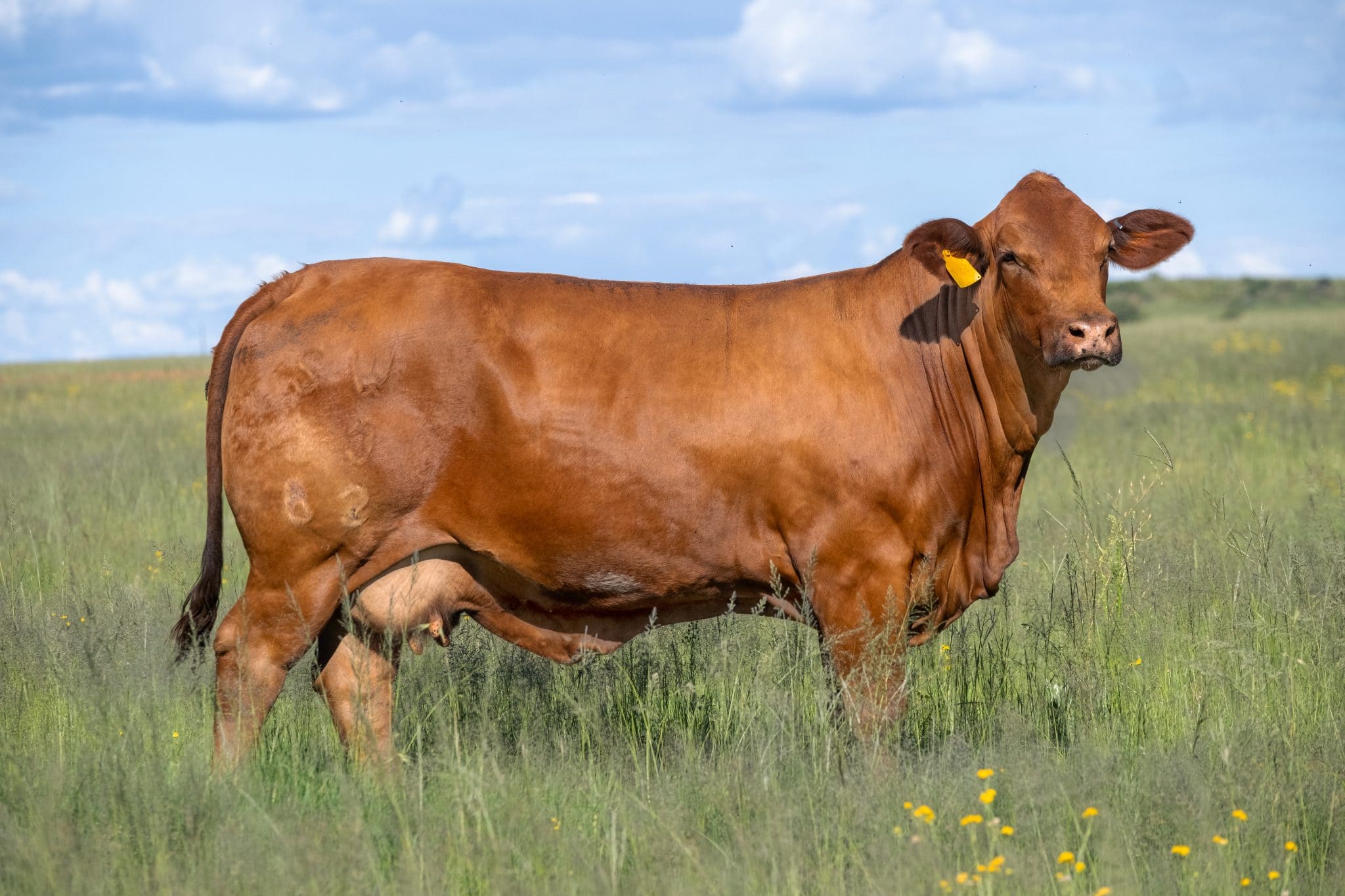
The breed demonstrates hybrid vigor in fertility, longevity, and overall hardiness while maintaining the docile temperament and ease of handling associated with Angus cattle. Their adaptability has made them popular throughout the southern United States and in international markets.
Beefmaster: The Six Essentials
Developed by Tom Lasater based on his “six essentials”—weight, conformation, fertility, hardiness, disposition, and milking ability—Beefmaster cattle represent a unique approach to composite breeding. These cattle are approximately 50% Brahman, 25% Hereford, and 25% Shorthorn.
Beefmaster cattle show no set color pattern, ranging from solid colors to various combinations. Bulls typically weigh 2,000-2,600 pounds while cows range from 1,200-1,500 pounds. They’re known for exceptional fertility, with conception rates often exceeding 95%, and excellent maternal ability.
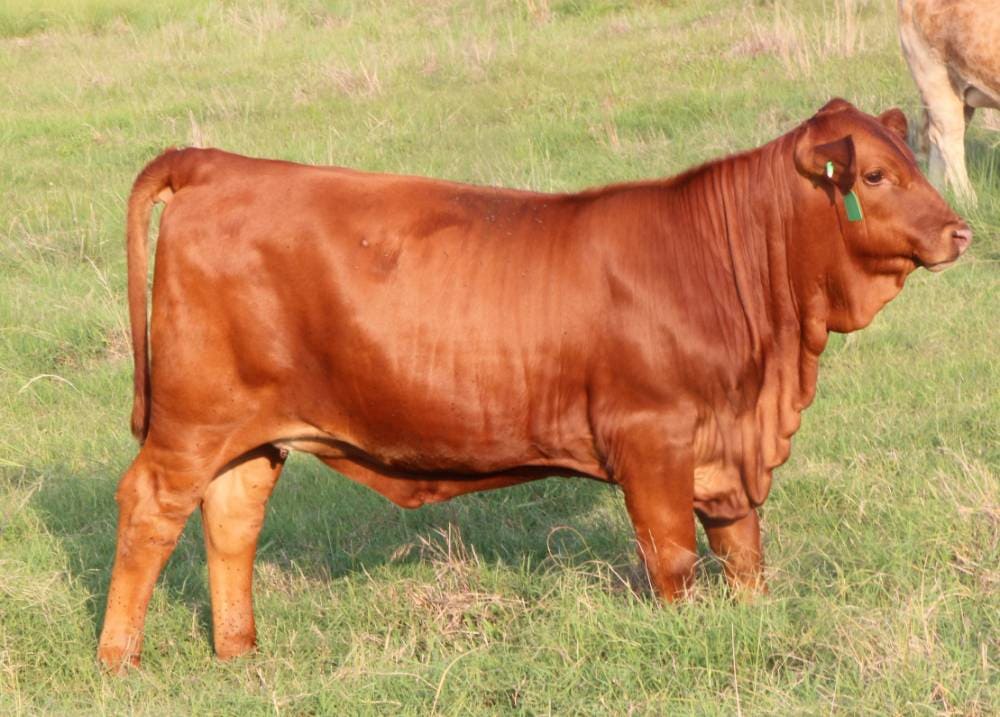
Their growth rates are impressive, with calves often gaining 3+ pounds daily under good conditions. Beefmaster cattle demonstrate remarkable hardiness and longevity, with many cows remaining productive for 15+ years. Their adaptability to diverse climates has made them popular worldwide.
Braford: The Australian Innovation
Braford cattle, developed in Australia and later refined in the United States, combine 5/8 Hereford with 3/8 Brahman genetics. These red and white cattle capture the adaptability and heat tolerance of Herefords while adding the tropical adaptation of Brahmans.
Bulls typically weigh 1,800-2,200 pounds while cows range from 1,100-1,400 pounds. Braford cattle show excellent performance in hot, humid climates while maintaining the docile temperament and easy handling characteristics of Herefords. Their fertility and maternal ability are outstanding, with high conception rates and good milk production.
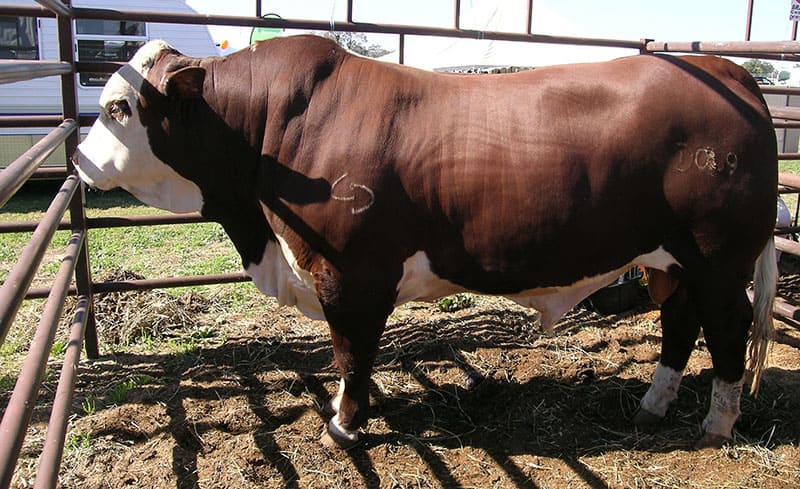
The breed’s meat quality is excellent, typically grading choice or better with good marbling. Their efficiency in converting forage to beef makes them popular for grass-fed operations, and their longevity ensures good return on investment for breeding programs.
Regional Adaptations: Climate-Specific Excellence
Geography and climate have shaped cattle breeds as much as human selection. Understanding these regional adaptations helps explain why certain breeds dominate specific areas and provides insight into matching breeds with environmental conditions.
Cold Climate Champions
Scottish Highland: Built for Harsh Conditions
Few breeds embody environmental adaptation like Scottish Highland cattle. These shaggy, horned cattle from the Scottish Highlands possess the longest hair of any cattle breed—a double coat consisting of a downy undercoat and long, oily outer hair that sheds rain and snow effectively.
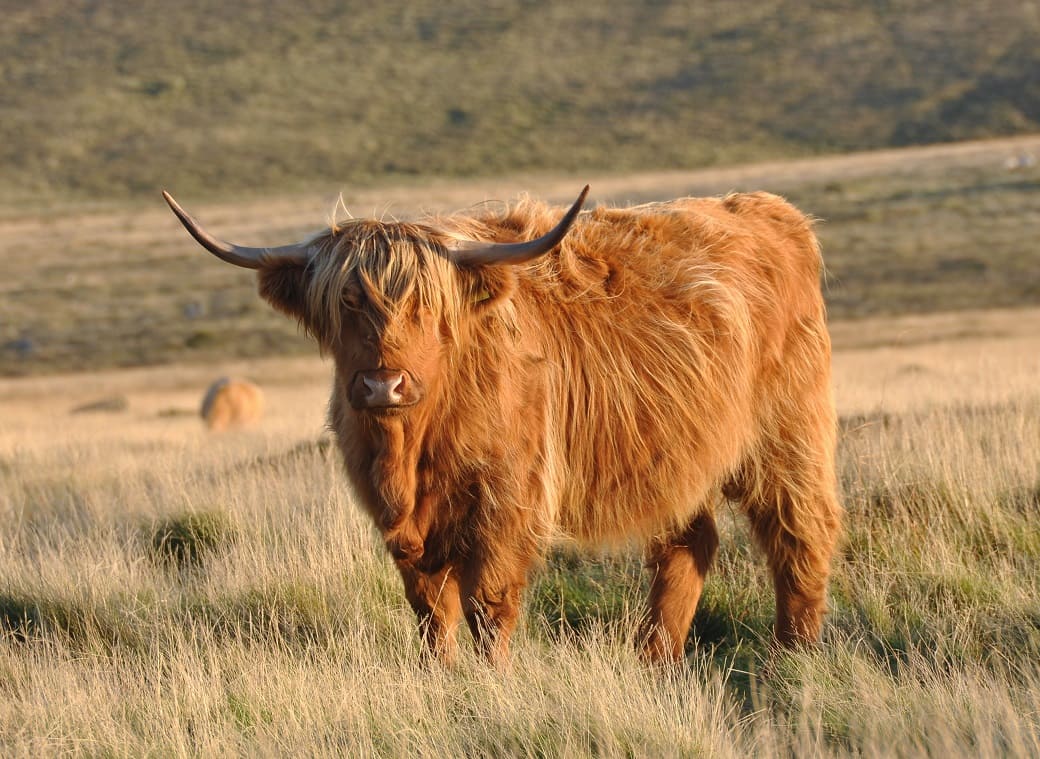
Highland cattle can survive and reproduce in conditions that would challenge most other breeds. They can calve successfully in temperatures as low as -20°F and maintain body condition on forage that would leave other breeds thin.
Their ability to thrive on poor-quality forage and withstand extreme cold makes them valuable for marginal lands where feed costs would make other breeds uneconomical.
Despite their rugged appearance, Highlands produce lean, well-marbled beef that’s increasingly popular in niche markets. Their slower growth rate means they typically aren’t ready for market until 24-30 months, but their low input requirements often make them profitable in appropriate environments.
Galloway: The Oreo Cookie Cow
Belted Galloway cattle, affectionately known as “Oreo cows” due to their distinctive white belt around black bodies, represent another cold-adapted breed. These naturally polled cattle from Scotland possess excellent foraging ability and require minimal inputs to maintain condition.
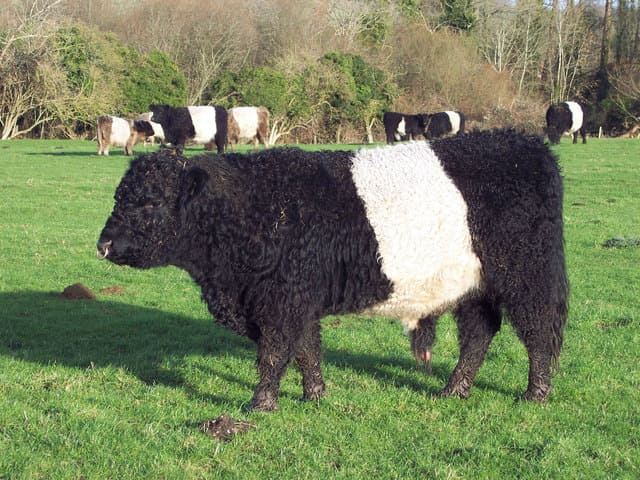
Their double hair coat eliminates the need for expensive shelter, and their ability to convert poor-quality forage into high-quality beef makes them economically attractive for extensive grazing operations. Galloway cows typically remain productive until 15-20 years of age, and their excellent maternal ability means high weaning percentages even in harsh conditions.
Traditional Galloways also come in solid colors—black, red, or dun—and share the same hardy characteristics as their belted cousins. All Galloway varieties are naturally polled and demonstrate exceptional cold tolerance and foraging ability.
Heat-Adapted Specialists
Brahman: The Tropical Survivor
Brahman cattle represent the ultimate adaptation to hot, humid climates. Developed in the United States from Indian Zebu breeds, Brahmans possess numerous heat-tolerance mechanisms including large ears for heat dissipation, loose skin to increase surface area for cooling, and the ability to sweat more effectively than European breeds.
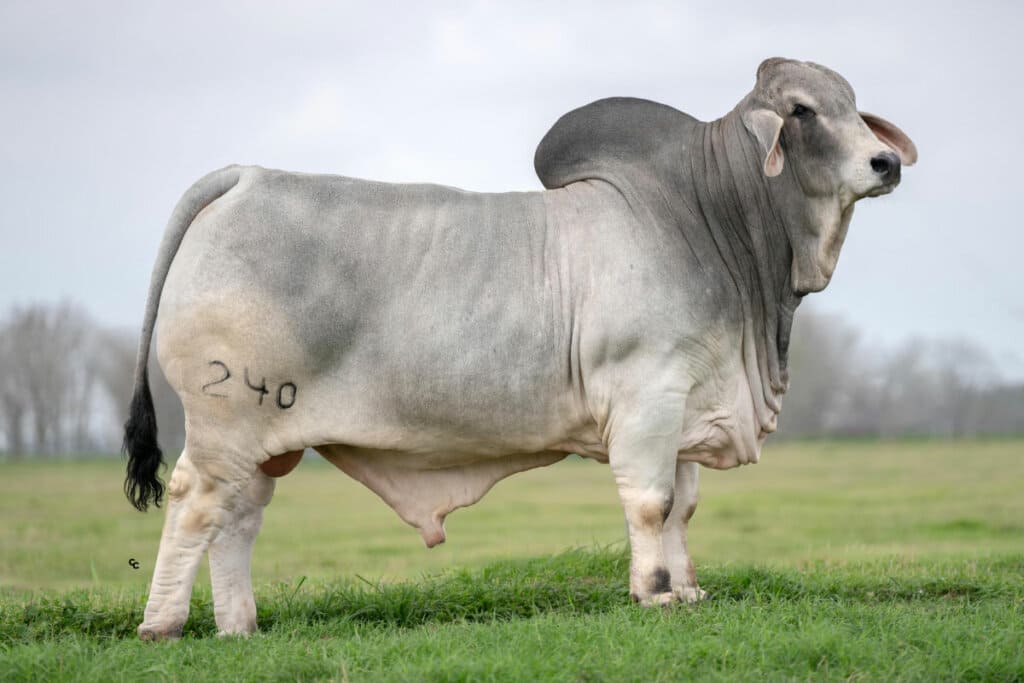
Their resistance to parasites and diseases common in tropical climates, combined with their ability to thrive on low-quality forage, has made Brahmans valuable in challenging environments. While they may not match European breeds for growth rate or meat quality under ideal conditions, they excel where other breeds fail to survive.
Brahman cattle typically reach puberty later than Bos taurus breeds (18-24 months for heifers), but they often remain productive longer. Their superior fertility in hot climates and excellent longevity make them economically attractive despite slower early growth rates.
Indian Dairy Breeds: Tropical Milk Production
Several pure Indian breeds have gained recognition for their ability to produce milk under harsh tropical conditions where European dairy breeds struggle.
Gir: The Sacred Producer
Gir cattle from Gujarat, India, are known for their distinctive lyre-shaped horns and gentle temperament. These white cattle with red or brown patches are considered sacred by many Indians and have been carefully maintained for centuries.
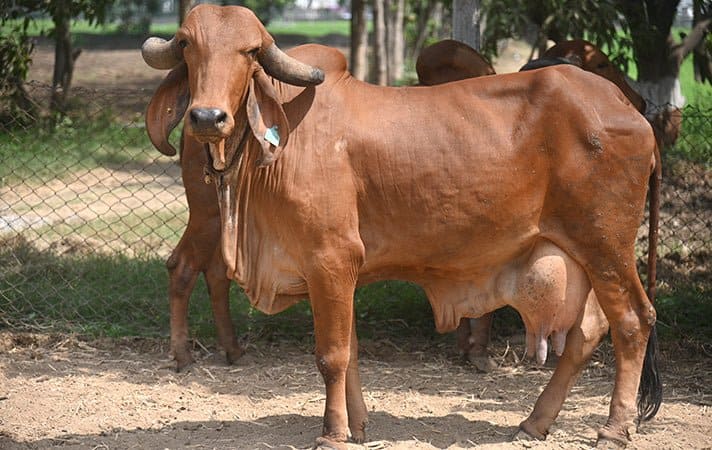
Gir cows typically produce 1,200-1,800 pounds of milk per lactation with high butterfat content (4.5-5.5%). While this production seems modest compared to Holstein levels, it represents exceptional performance under tropical conditions with minimal inputs.
Gir cattle are extremely hardy and disease-resistant, often producing milk with very low somatic cell counts.
Red Sindhi: The Pakistani Performer
Red Sindhi cattle from the Sindhi region (now Pakistan) are prized for their milk production and adaptability. These solid red cattle typically produce 1,250-1,800 pounds of milk per lactation with excellent fat and protein content.
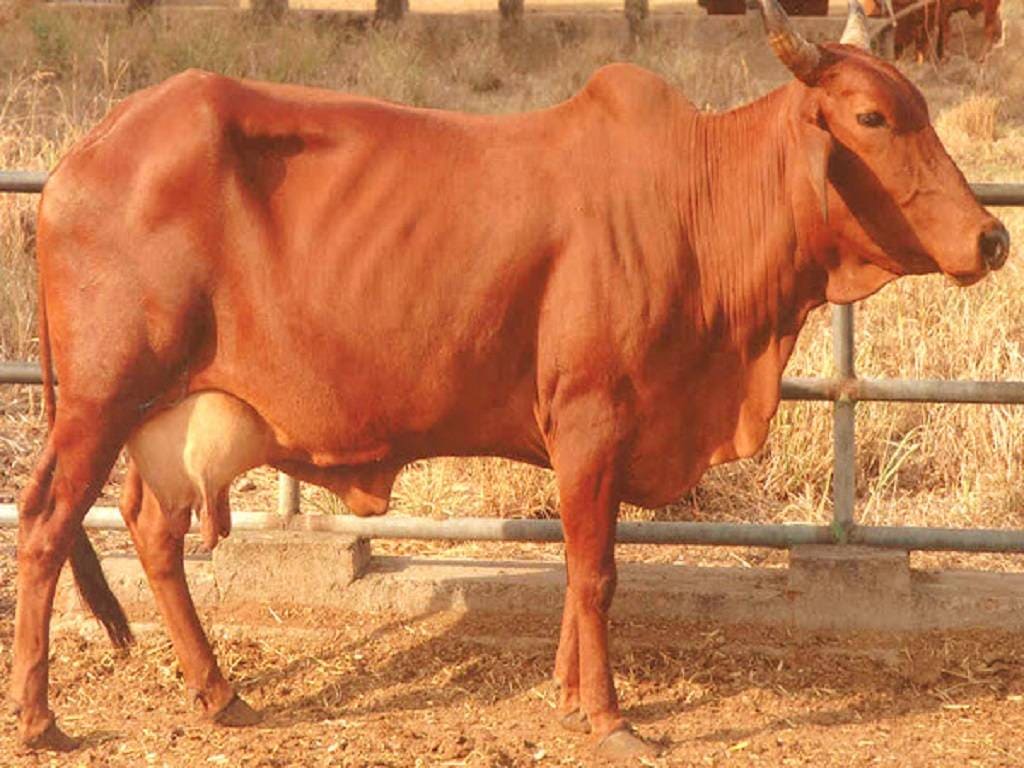
Red Sindhi cattle demonstrate remarkable heat tolerance and can maintain production levels even during extreme temperature periods. Their docile temperament and easy milking characteristics have made them popular for crossbreeding programs aimed at improving tropical dairy production.
Sahiwal: The Queen of Indian Breeds
Sahiwal cattle from Punjab are considered the best indigenous dairy breed of the Indian subcontinent. These reddish-dun colored cattle typically produce 1,400-2,500 pounds of milk per lactation—substantially higher than other Indian breeds.
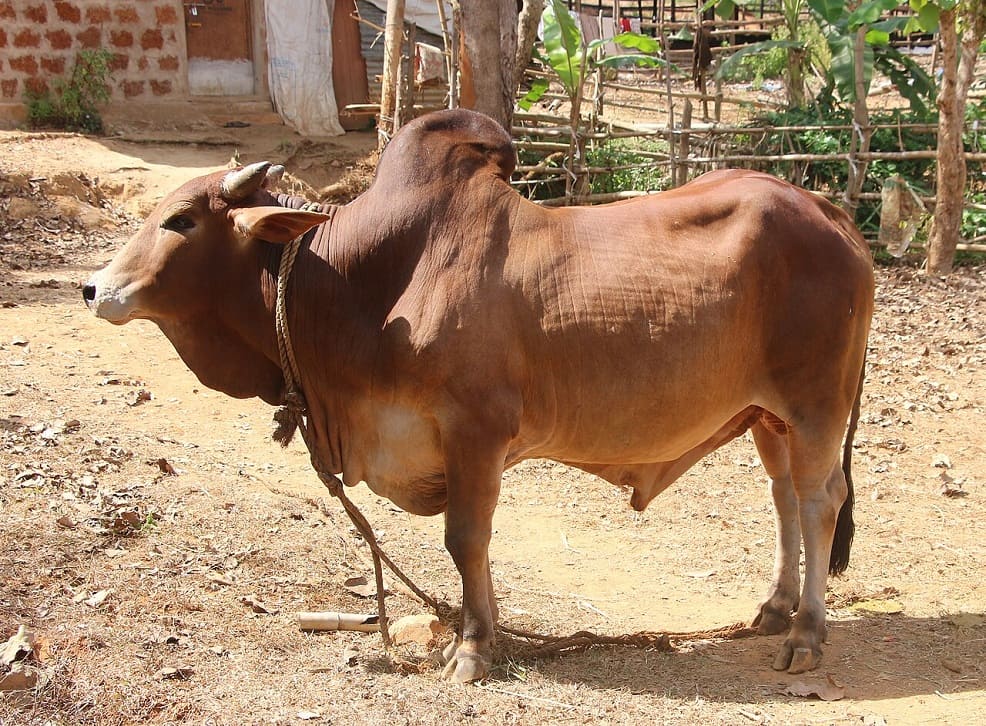
Sahiwal cows demonstrate excellent heat tolerance, disease resistance, and the ability to maintain production on moderate-quality feeds. Their longevity is exceptional, with many remaining productive for 15+ years. The breed has been used extensively in crossbreeding programs throughout Africa and Latin America.
Adaptability Success Stories
The development of regionally adapted breeds demonstrates how cattle can be modified to excel in specific environments while maintaining productivity.
Murray Grey: The Australian Innovation
Murray Grey cattle originated from a chance mating in Australia between a Shorthorn cow and an Angus bull, producing silver-grey offspring. Selective breeding refined this into a distinct breed known for its docile temperament and excellent meat quality.
Bulls typically weigh 1,900-2,200 pounds while cows range from 1,200-1,400 pounds. Murray Greys are naturally polled and demonstrate excellent heat tolerance while maintaining good growth rates. Their meat is exceptionally tender and well-marbled, often grading choice without supplemental feeding.
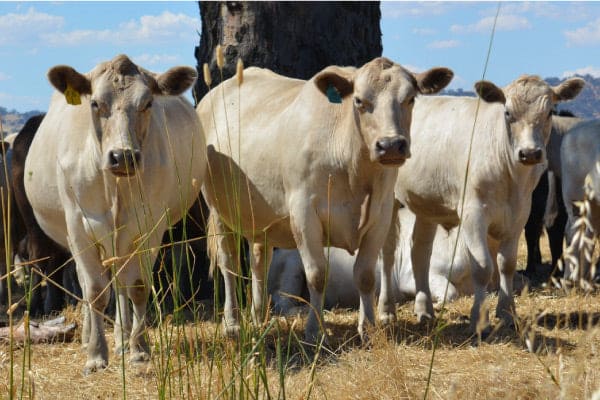
The breed’s calm disposition and easy handling characteristics have made them popular for operations where labor is limited. Their maternal ability is excellent, with high conception rates and good milk production supporting rapid calf growth.
Senepol: The Caribbean Creation
Developed on the Caribbean island of St. Croix, Senepol cattle combine African N’Dama cattle with European breeds. These polled, red cattle demonstrate exceptional heat tolerance while maintaining good productivity.
Bulls typically weigh 1,800-2,000 pounds while cows range from 1,000-1,200 pounds. Senepol cattle show remarkable adaptation to hot, humid climates with minimal shade requirements. Their hair coat is short and slick, and they show excellent tolerance to internal and external parasites.
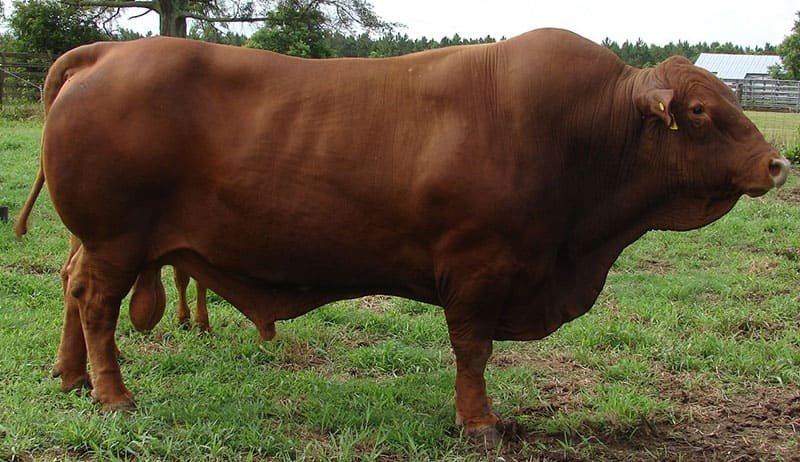
Their reproductive performance is outstanding, with early puberty, high conception rates, and easy calving. Senepol cattle demonstrate the benefits that can be achieved through strategic crossbreeding for environmental adaptation.
Economic Realities: Feed Efficiency and Production Costs
Understanding the economic implications of breed choice often determines long-term success in cattle operations. Feed typically represents 60-70% of production costs, making feed efficiency a critical factor in breed selection.
Feed Conversion Economics
Different breeds vary significantly in their ability to convert feed into useful products. Jersey cows, despite their small size, can produce more milk solids per pound of feed consumed than larger breeds. Similarly, some beef breeds can gain weight on 20-30% less feed than others of similar final weight.
For example, Highland cattle and Texas Longhorns excel at maintaining condition and reproducing on marginal forage that would leave Holstein or Charolais cattle thin and unproductive.
In contrast, under high-quality nutrition, Continental European breeds like Charolais and Limousin can achieve daily gains of 3-4 pounds compared to 2-3 pounds for British breeds.
The economic implications are substantial. A breed that requires 20% less feed to maintain a breeding female can significantly impact profitability, especially when feed costs are high. Similarly, breeds that can utilize lower-quality forages reduce production costs in areas where high-quality feed is expensive or unavailable.
👉 Here’s How to Reduce Hay Loss: Best Storage & Feeding Practices for Farmers
Reproductive Efficiency Impact
Reproductive performance often has even greater economic impact than growth rate. A breed that consistently achieves 95% conception rates compared to one that achieves 85% rates will wean 10% more calves annually—a difference that often exceeds gains from superior growth rates.
Breeds like Angus and Hereford typically achieve conception rates of 90-95% under good management, while some Continental breeds may achieve only 80-85% due to later maturity and higher nutritional requirements for reproduction. The economic value of this difference compounds over the productive life of the cow.
Similarly, breeds with easy calving consistently save veterinary costs and labor while reducing calf losses. Breeds like Jersey, Angus, and Hereford typically have calving difficulties in less than 5% of births, while larger breeds may experience problems in 10-15% of calvings, particularly in first-calf heifers.
Common Misconceptions About Cattle Breeds
Despite the wealth of information available, several misconceptions persist about cattle breeds that can lead to poor decisions.
- “Brown Cows Make Chocolate Milk”
While this childhood myth is harmless, it reflects a broader misunderstanding about milk composition. All mammals produce white milk regardless of their coat color, though the nutritional content varies significantly between breeds. Jersey milk’s golden color comes from high beta-carotene content, not from the cow’s brown coat.
- “Bigger Breeds Are Always More Profitable”
Larger breeds often capture attention for their impressive size, but profitability depends on the relationship between inputs and outputs. Smaller, more efficient breeds often generate higher profits per cow, especially when feed costs are high or forage quality is limited.
- “Crossbred Animals Are Inferior to Purebreds”
This misconception ignores the substantial benefits of hybrid vigor. Well-planned crossbreeding programs typically produce animals that outperform purebreds in fertility, longevity, and overall productivity. The key is strategic crossbreeding rather than random mixing of breeds.
- “Modern Breeds Are Superior to Heritage Breeds”
While modern breeds may excel in specific traits, heritage breeds often possess valuable characteristics like disease resistance, longevity, or environmental adaptation that have been lost in more specialized breeds. Conservation of genetic diversity remains important for future breeding programs.
👉 Unlocking the Potential: Embracing Heritage Breeds for Diverse Poultry Selection
Making the Right Choice: Practical Breed Selection
Selecting the appropriate breed for a specific situation requires careful consideration of multiple factors. The “best” breed depends entirely on the intended purpose, environmental conditions, available resources, and market requirements.
Climate Considerations
Climate represents perhaps the most critical factor in breed selection. Breeds with darker coats are more susceptible to heat stress, while those with light coats and dark skin provide the best combination of heat reflection and sun protection.
The humidity level compounds heat stress effects, making breed selection even more critical in hot, humid climates.
Temperature tolerance varies dramatically between breeds. Holstein cattle begin experiencing heat stress at temperatures above 70°F, while Brahman cattle remain comfortable until temperatures exceed 85°F. This difference can mean the difference between profitable production and economic disaster in marginal climates.
Nutritional Resource Matching
Different breeds have dramatically different nutritional needs. High-producing dairy breeds and rapidly growing beef breeds require high-quality diets to reach their genetic potential, while hardy breeds like Highlands or Texas Longhorns can maintain condition on marginal forage that would leave other breeds thin and unproductive.
The economic implications are substantial. Breeds that can utilize lower-quality forages may have lower genetic potential but often prove more profitable when high-quality feed is expensive or unavailable. Matching nutritional requirements with available resources is crucial for sustainable production.
Management Intensity Considerations
Some breeds thrive under intensive management systems with regular handling and health interventions, while others perform better with minimal interference. High-producing dairy breeds typically require intensive management, including regular milking schedules, precise nutrition management, and close health monitoring.
In contrast, hardy breeds like Scottish Highland or Texas Longhorn cattle may actually perform worse under intensive management, preferring extensive grazing systems with minimal human intervention. Matching breed temperament and management requirements with available labor and facilities is crucial for success.
Market Alignment
Understanding market preferences helps guide breed selection. Some markets pay premiums for specific breeds or characteristics (like Angus beef or Jersey dairy products), while others focus purely on production efficiency. Aligning genetics with market demands ensures the best economic returns.
Niche markets may offer premium prices for specialty breeds or production systems, but they often require different marketing strategies and may have limited volume capacity. Mainstream markets typically offer more stable prices but may provide fewer opportunities for premiums.
The Future of Cattle Breeds
The cattle industry continues to evolve, with new breeds being developed and existing breeds being modified to meet changing demands. Several trends are shaping the future of cattle breeding.
Genomic Revolution
Modern genetic tools allow breeders to identify superior animals at birth rather than waiting for performance testing. This acceleration of genetic progress enables faster breed improvement and the development of animals with specific trait combinations.
Genomic selection is particularly valuable for traits that are difficult or expensive to measure, such as disease resistance or feed efficiency.
Climate Adaptation Imperative
As climate patterns change, breeds adapted to heat and drought may become more valuable in regions previously dominated by temperate-adapted breeds. This shift is already driving increased interest in heat-tolerant genetics in traditional beef and dairy regions.
Research programs are developing new genetic tools to identify heat tolerance genes that can be selected for or incorporated into existing breeds through crossbreeding programs. These efforts may accelerate the adaptation of favorite breeds to changing climates.
Sustainability Focus
Growing consumer interest in environmental sustainability is driving demand for cattle breeds and production systems that minimize environmental impact. Breeds that can maintain productivity on grass-based systems or that have superior feed conversion efficiency may gain market advantages.
Some breeds’ ability to sequester carbon in grassland systems or their lower methane production per unit of product may become important marketing advantages as environmental regulations and consumer preferences evolve.
Composite Breed Development
Many new breeds are composites that combine desirable traits from multiple parent breeds. These composites can capture hybrid vigor while maintaining consistency across generations. Modern breeding programs can design composites with specific trait combinations to meet precise market or environmental requirements.
The development of new composites accelerated by genomic selection allows breeders to create cattle with specific percentages of different breeds while maintaining predictable performance characteristics.
Key Takeaways
The incredible diversity of cattle breeds—over 250 worldwide—provides options for nearly any production situation, from tropical heat to arctic cold, from intensive dairy operations to extensive grazing systems.
No perfect breed exists. Every breed represents trade-offs, so success depends on matching breed strengths with your specific climate, resources, and goals. A Holstein excels in a modern dairy but would struggle on marginal rangeland where a Texas Longhorn thrives.
Purpose drives selection. Dairy breeds prioritize milk production, beef breeds focus on meat quality and growth, while dual-purpose breeds balance both. Understanding your primary goal narrows choices significantly.
Climate compatibility is non-negotiable. Heat-adapted breeds like Brahman excel where European breeds fail, while cold-hardy breeds like Highland cattle thrive in harsh conditions that would stress tropical breeds.
Reproductive efficiency often matters more than production records. A breed that consistently achieves 95% conception rates versus 85% will wean 10% more calves annually—a difference that compounds over years.
Strategic crossbreeding captures hybrid vigor, with crossbred cattle typically producing 15-25% more pounds of calf weaned per cow than straightbreds. Well-planned crossing programs often outperform purebred operations commercially.
Individual selection within breeds remains crucial, as variation within breeds often exceeds differences between breed averages. The best animal from any breed can outperform average animals from “superior” breeds.
Whether you’re planning a herd or simply appreciating cattle in a field, remember that each breed represents centuries of careful selection and adaptation. These living libraries of genetic diversity continue providing the foundation for feeding the world while adapting to ever-changing challenges.
